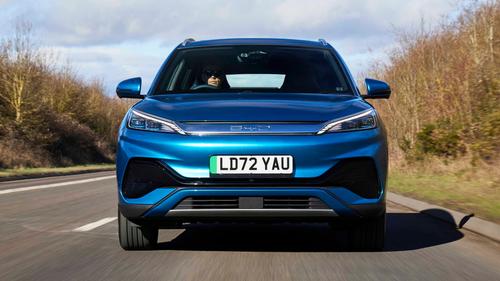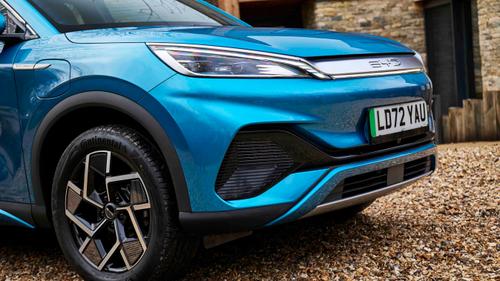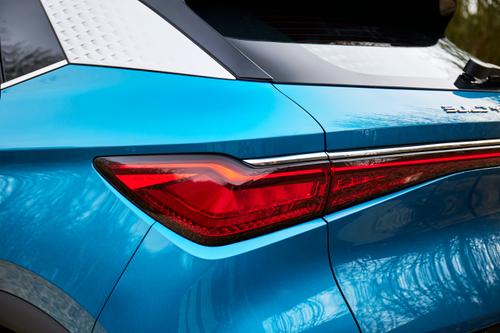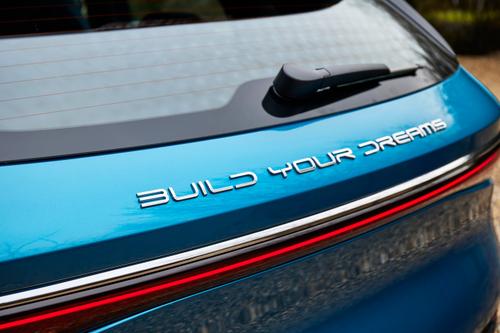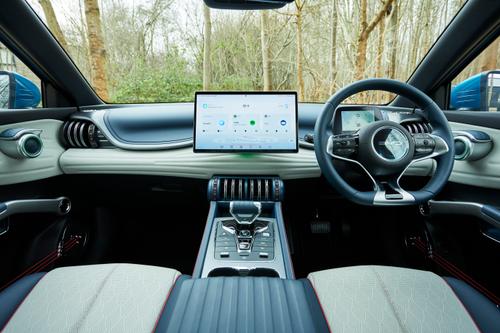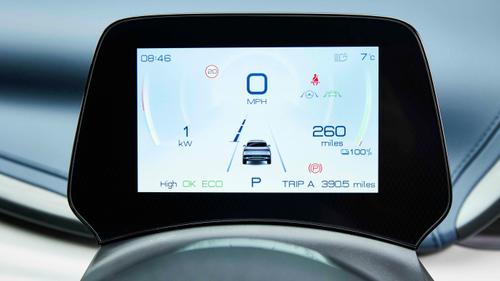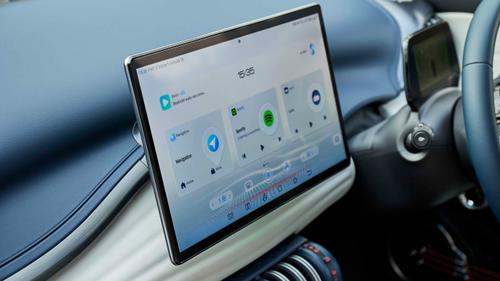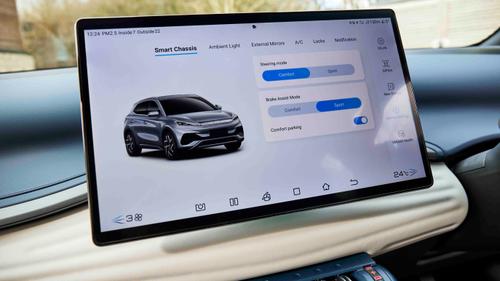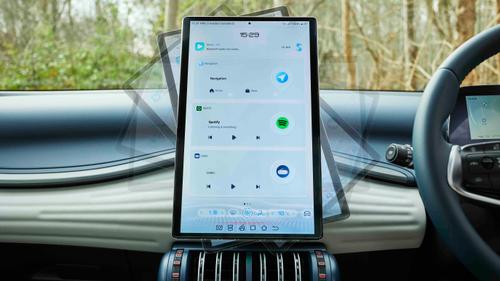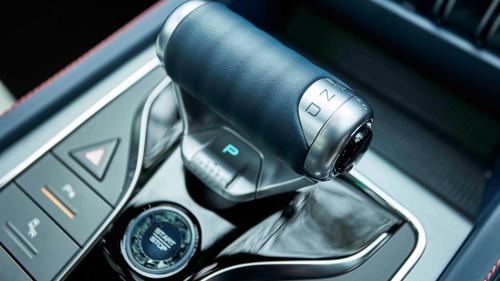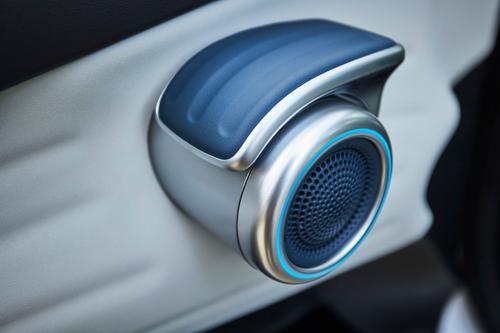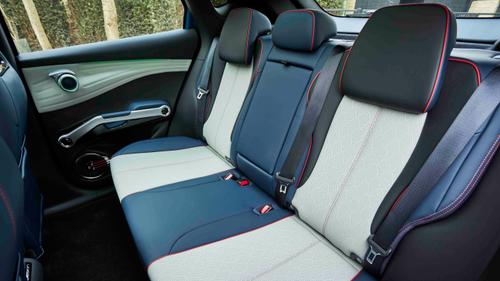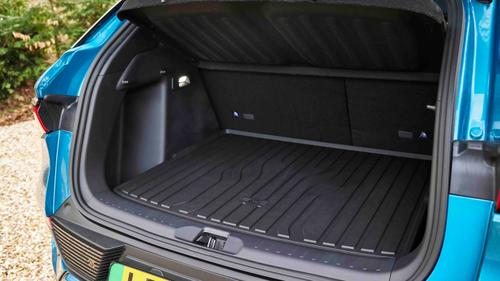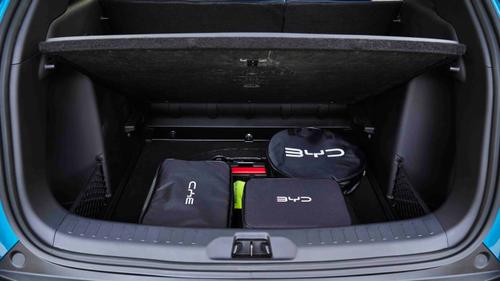
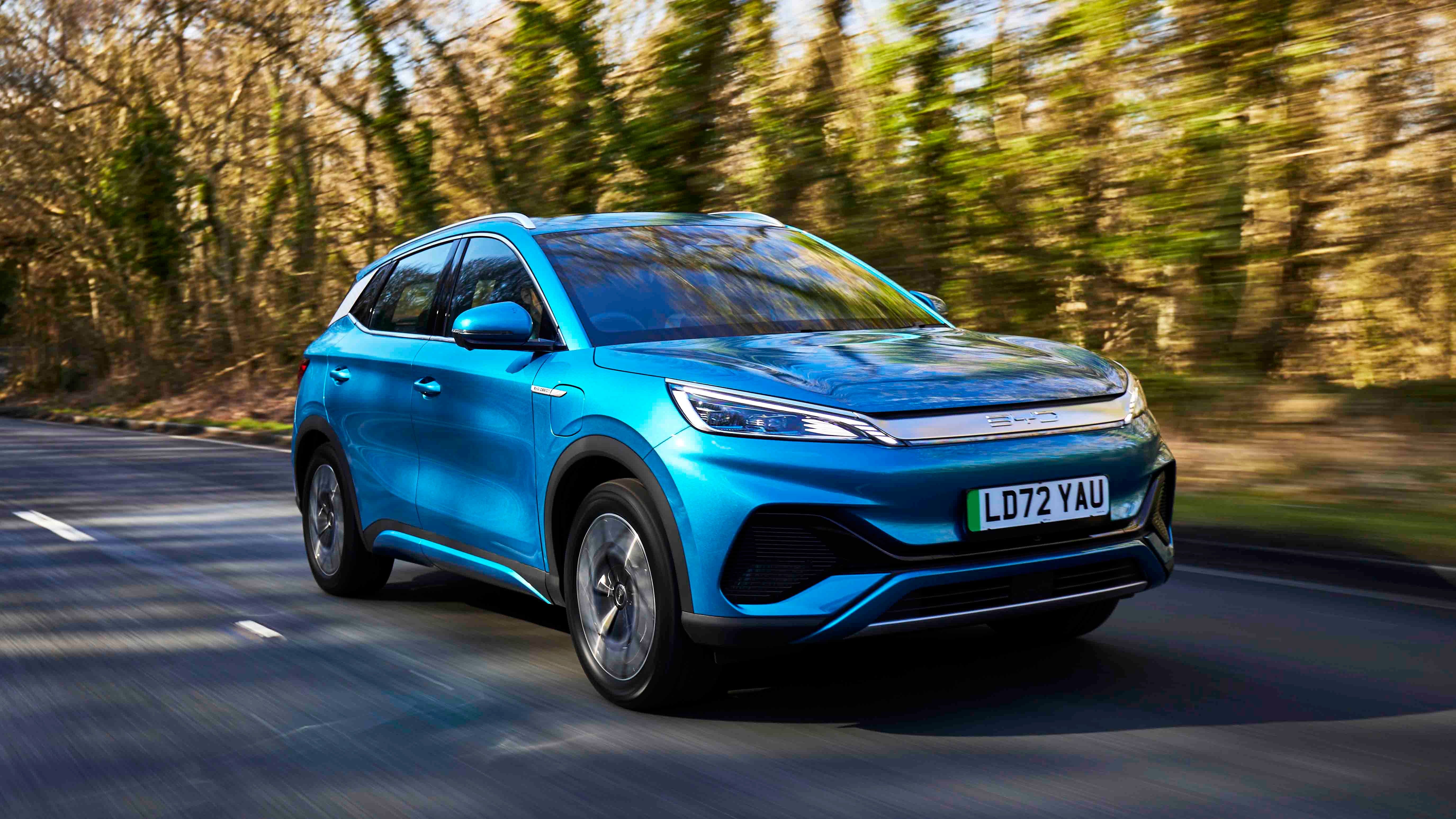
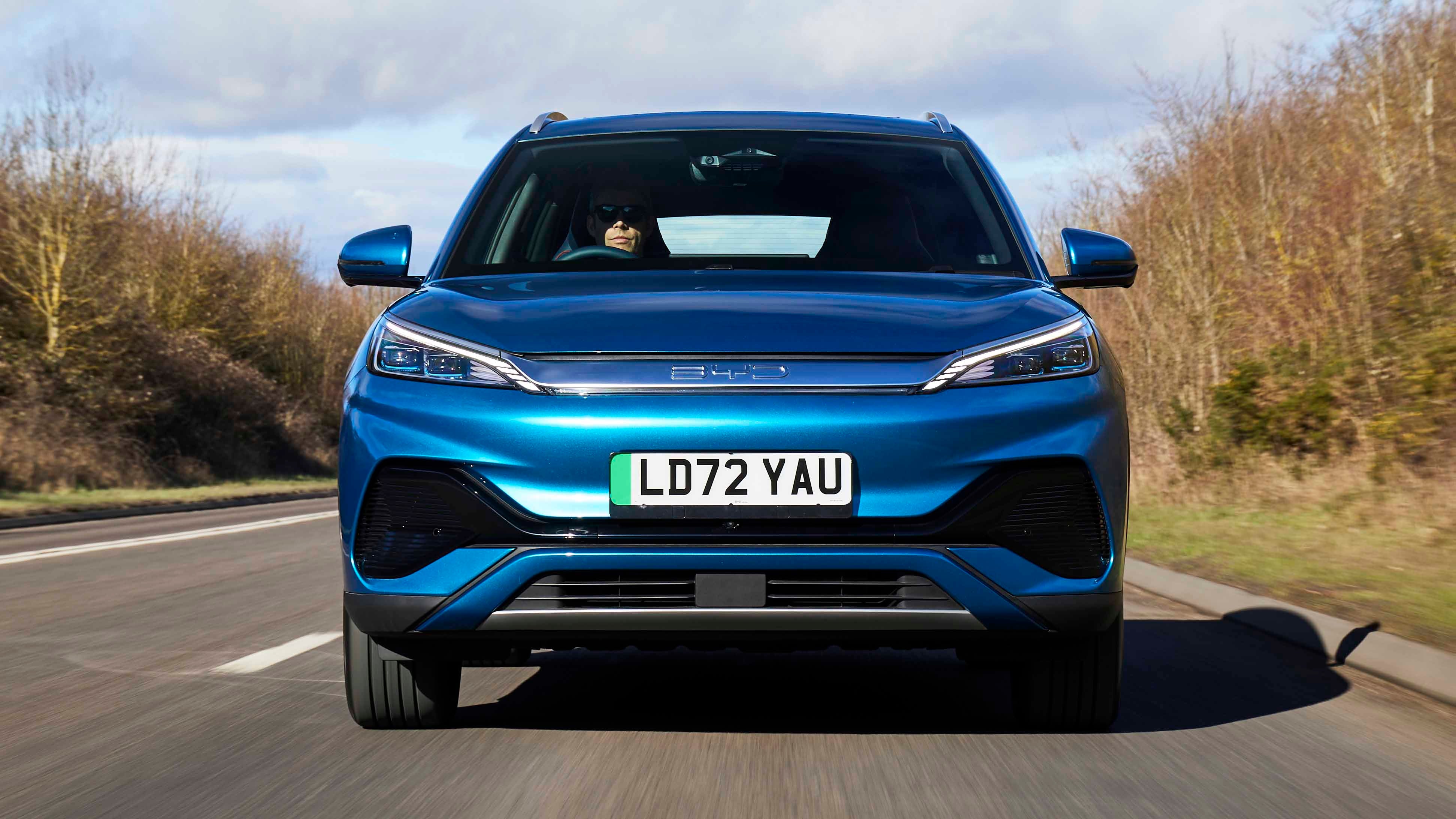
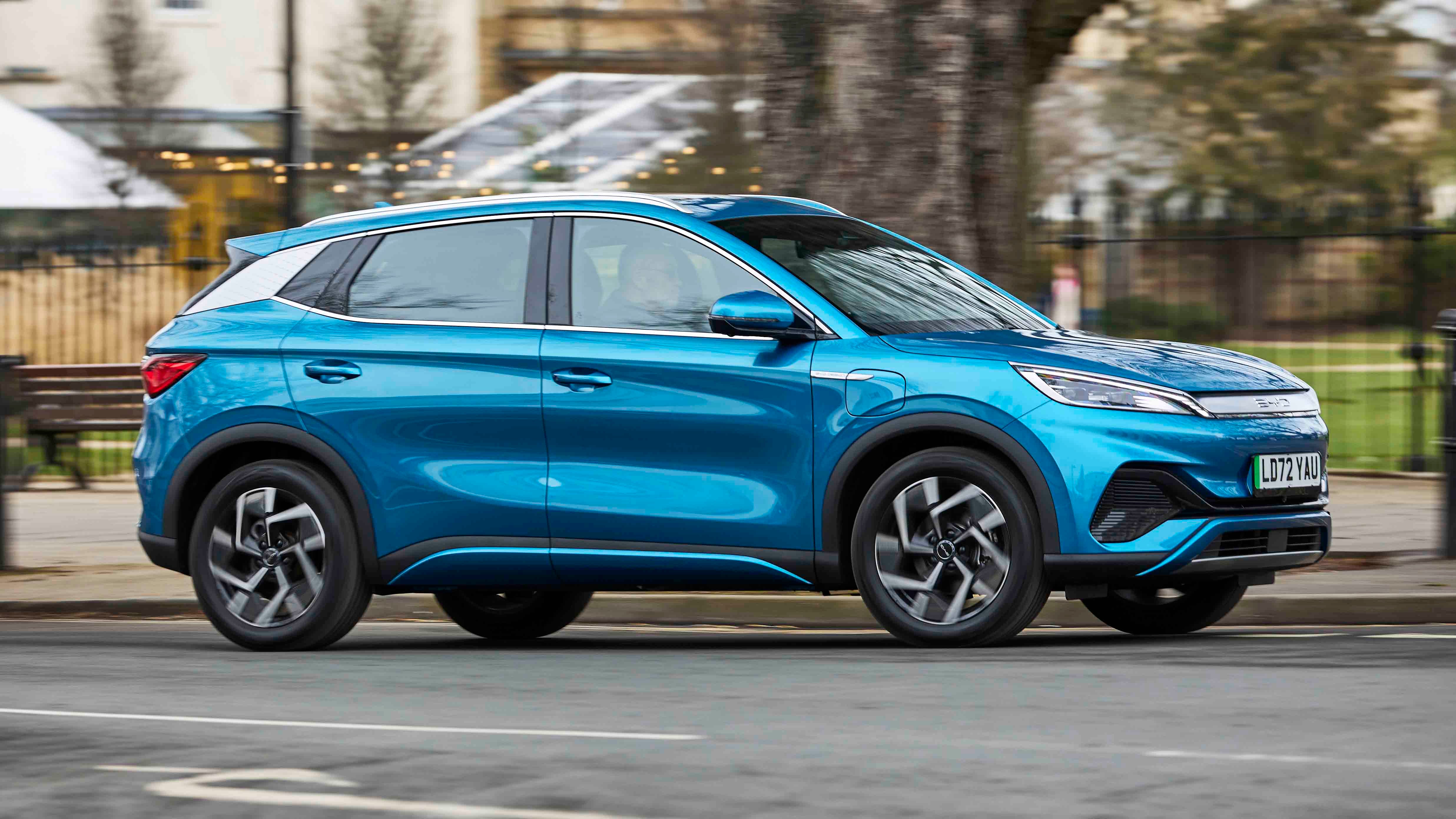
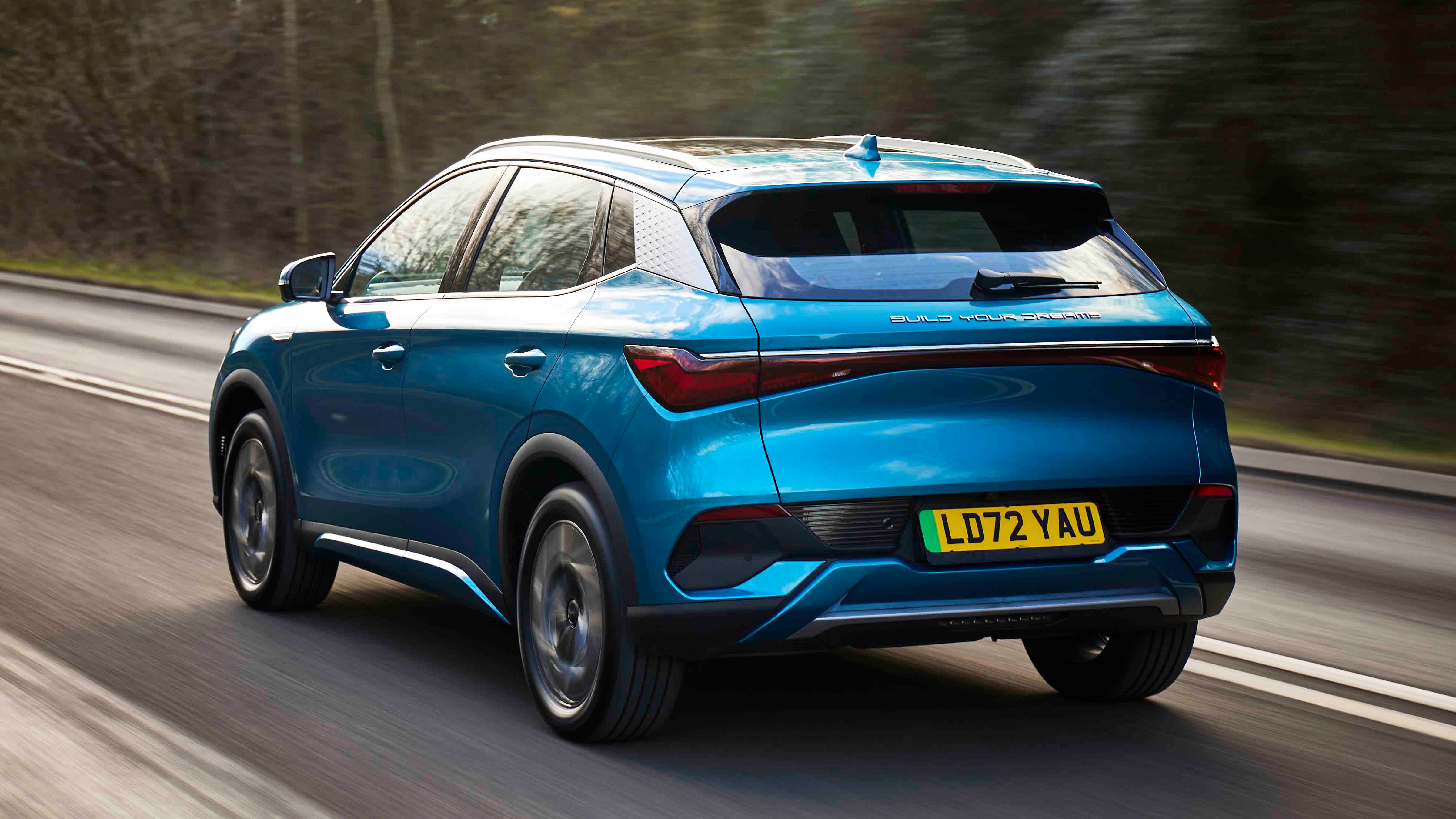
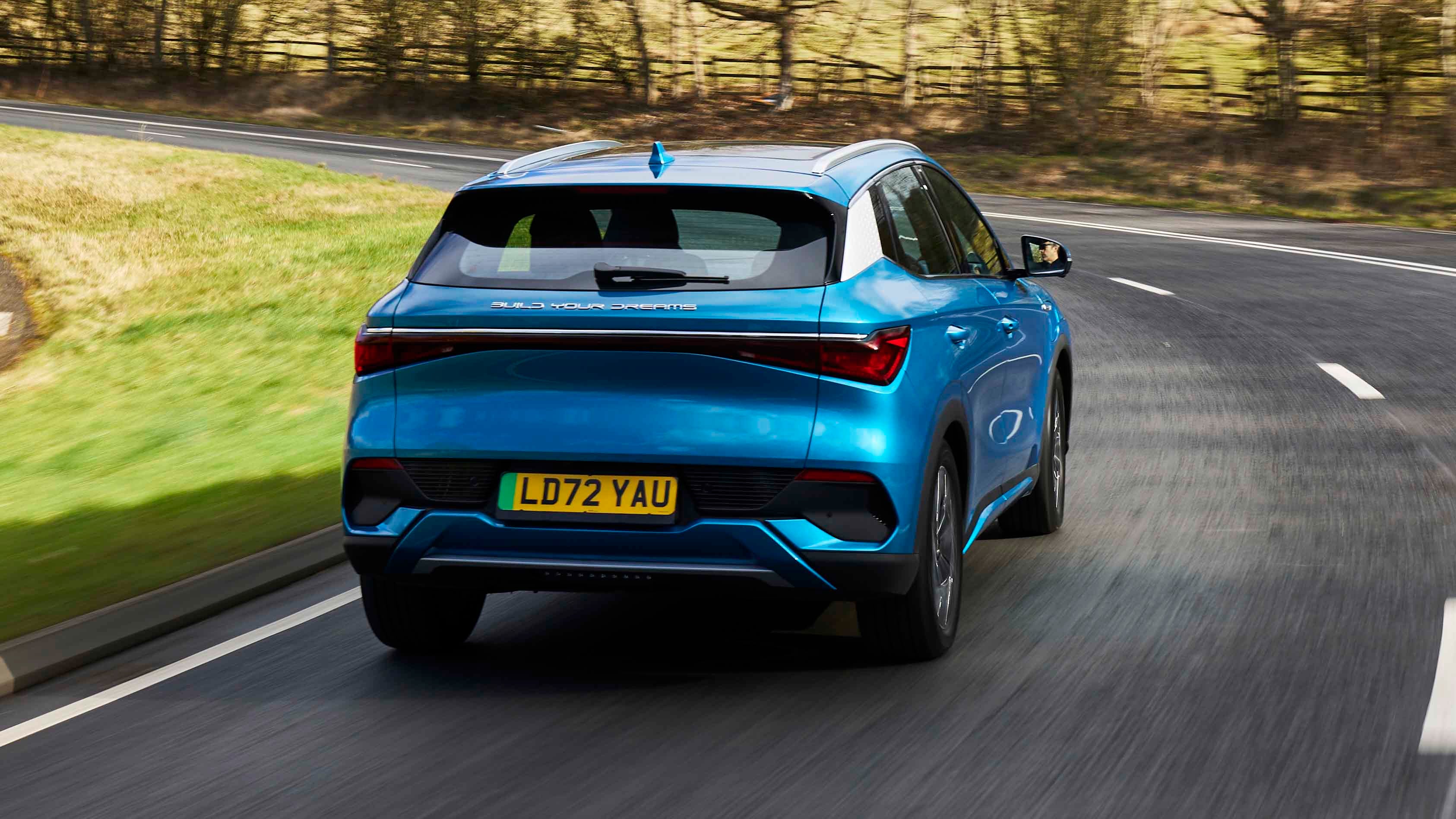
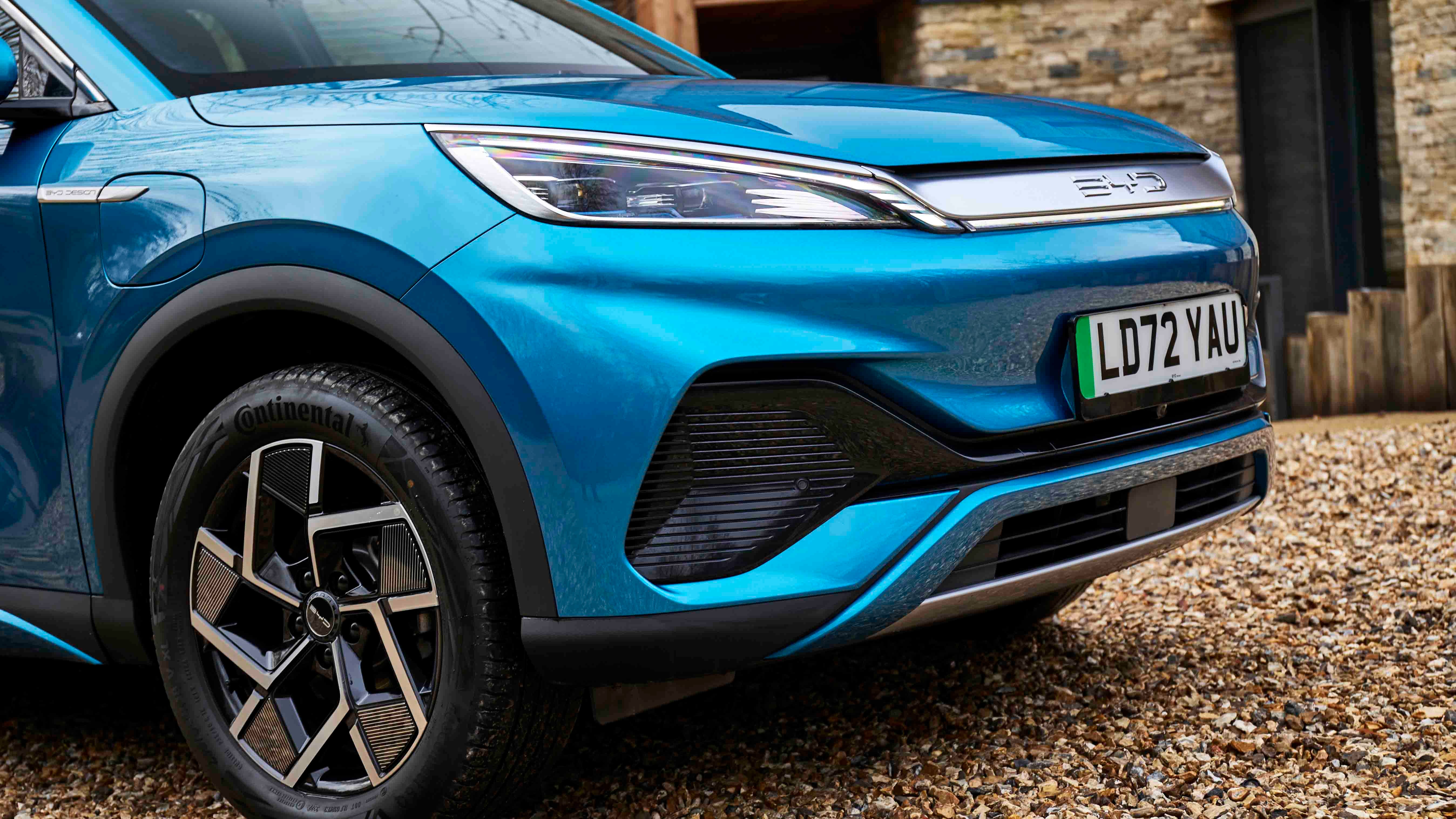
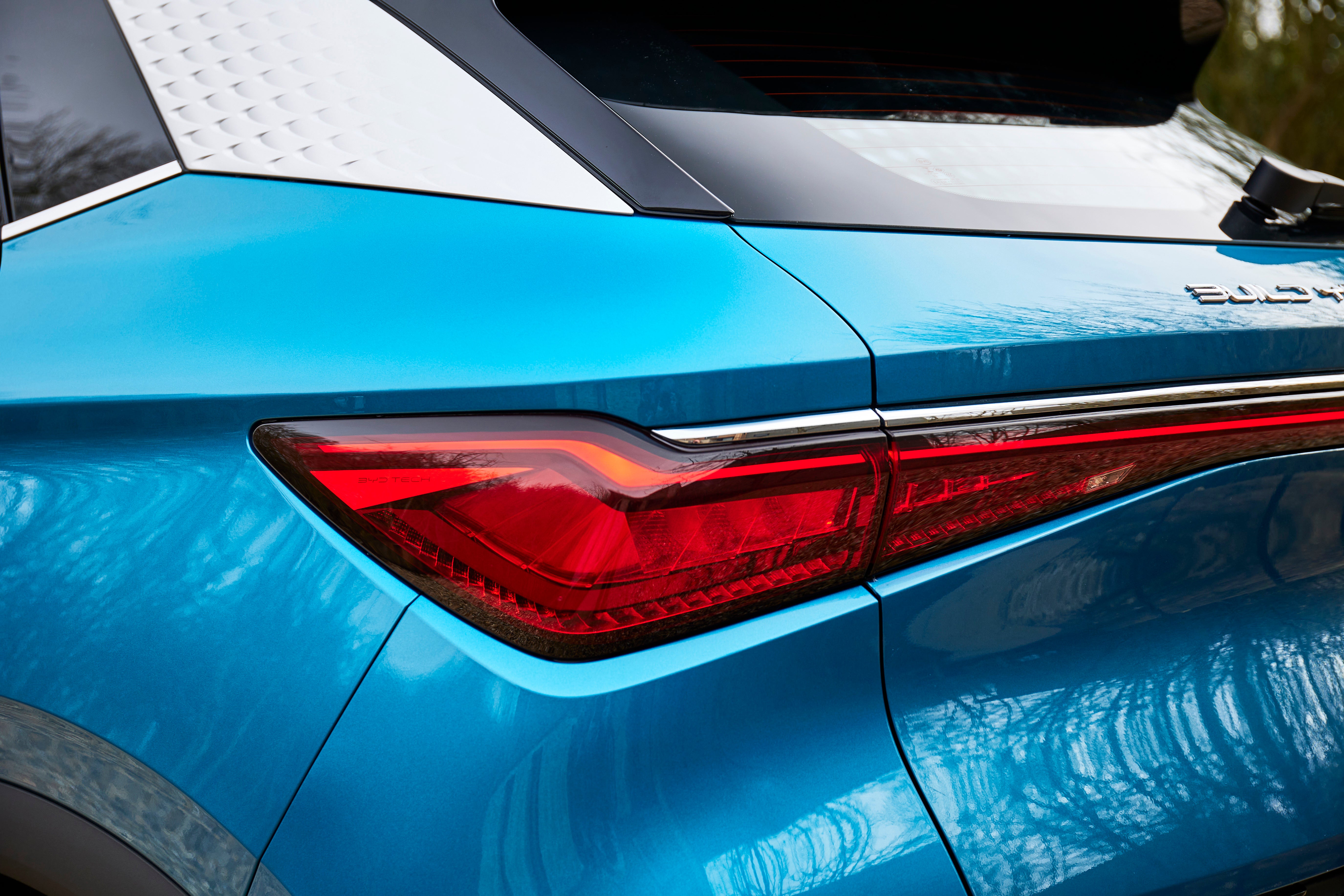
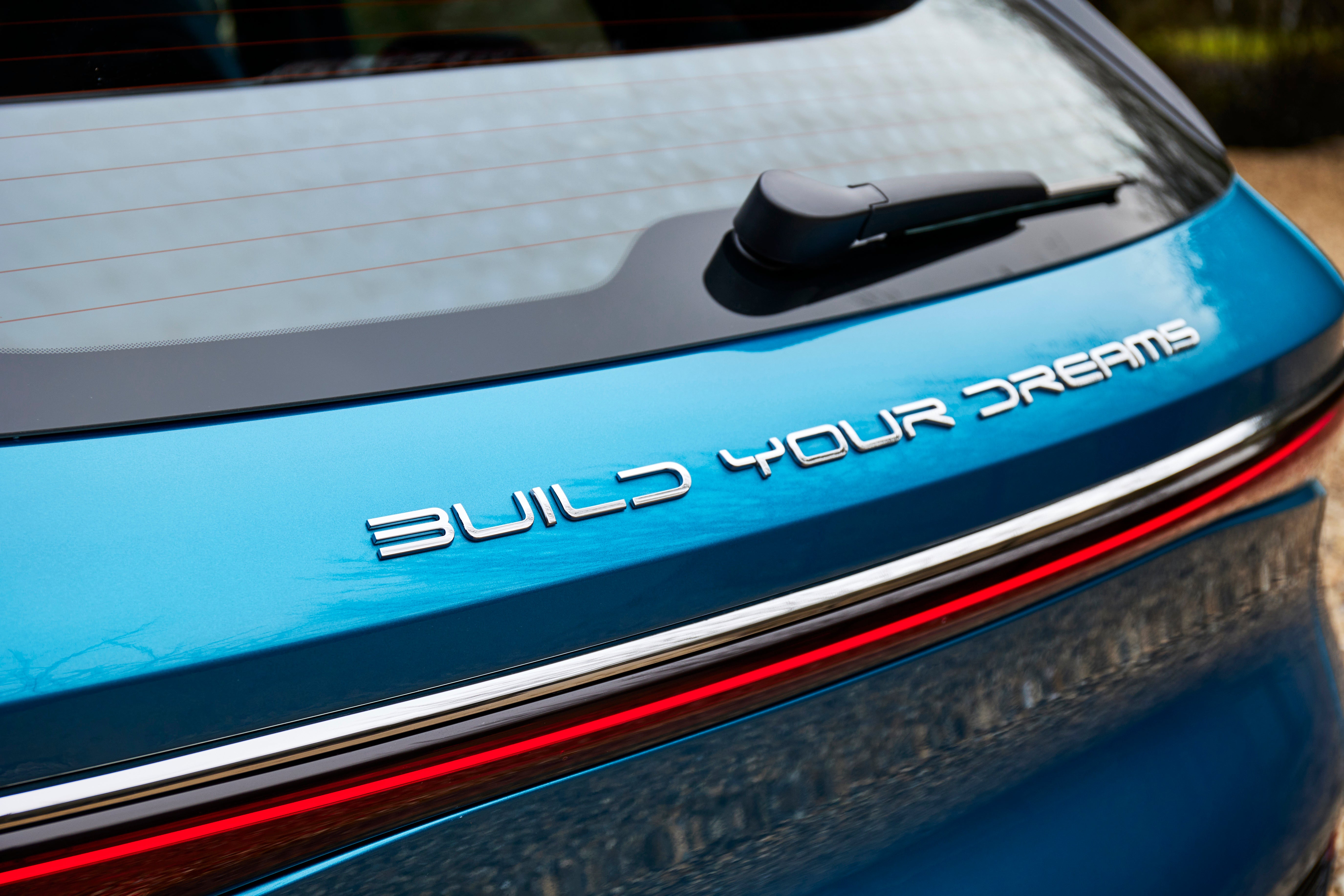
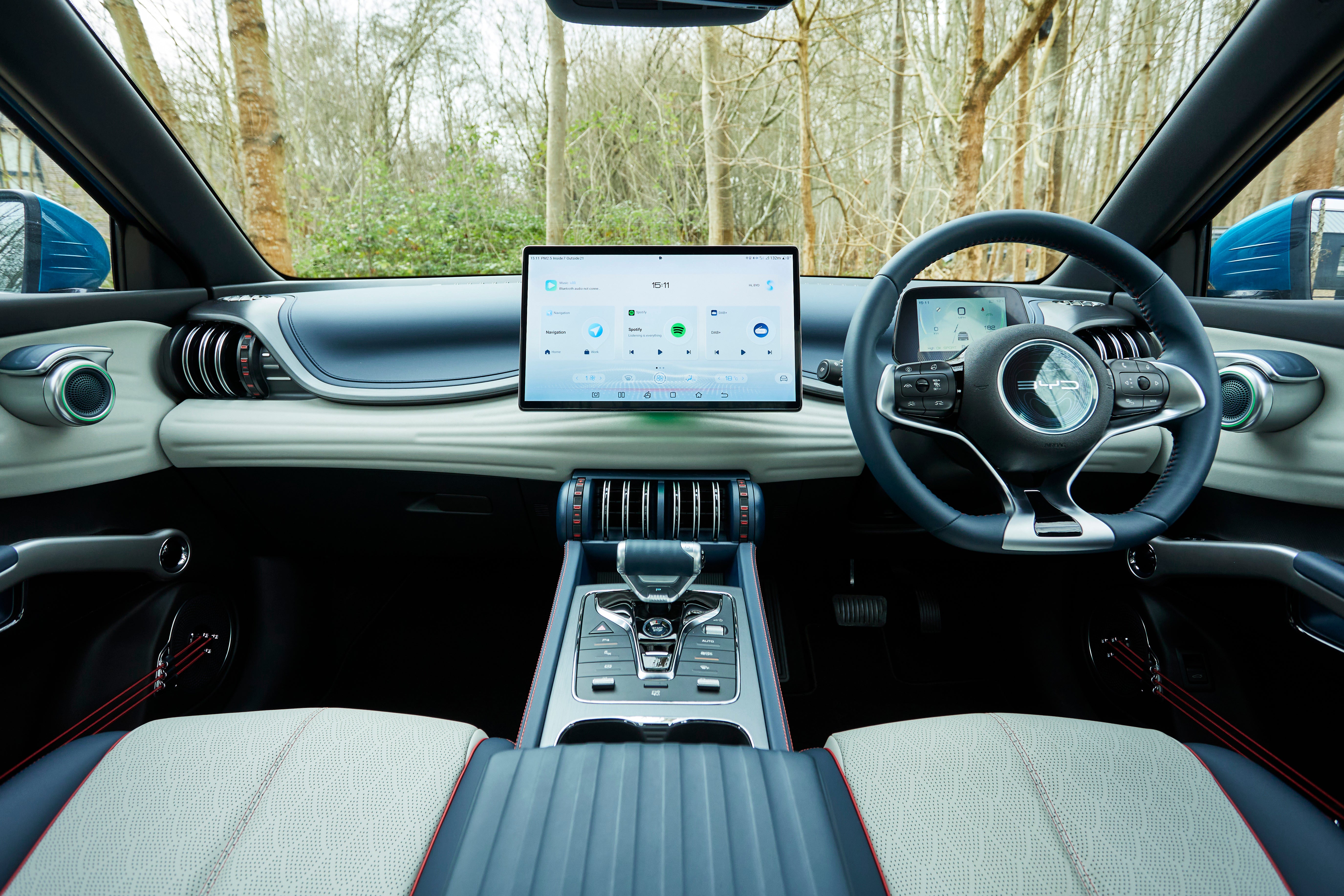
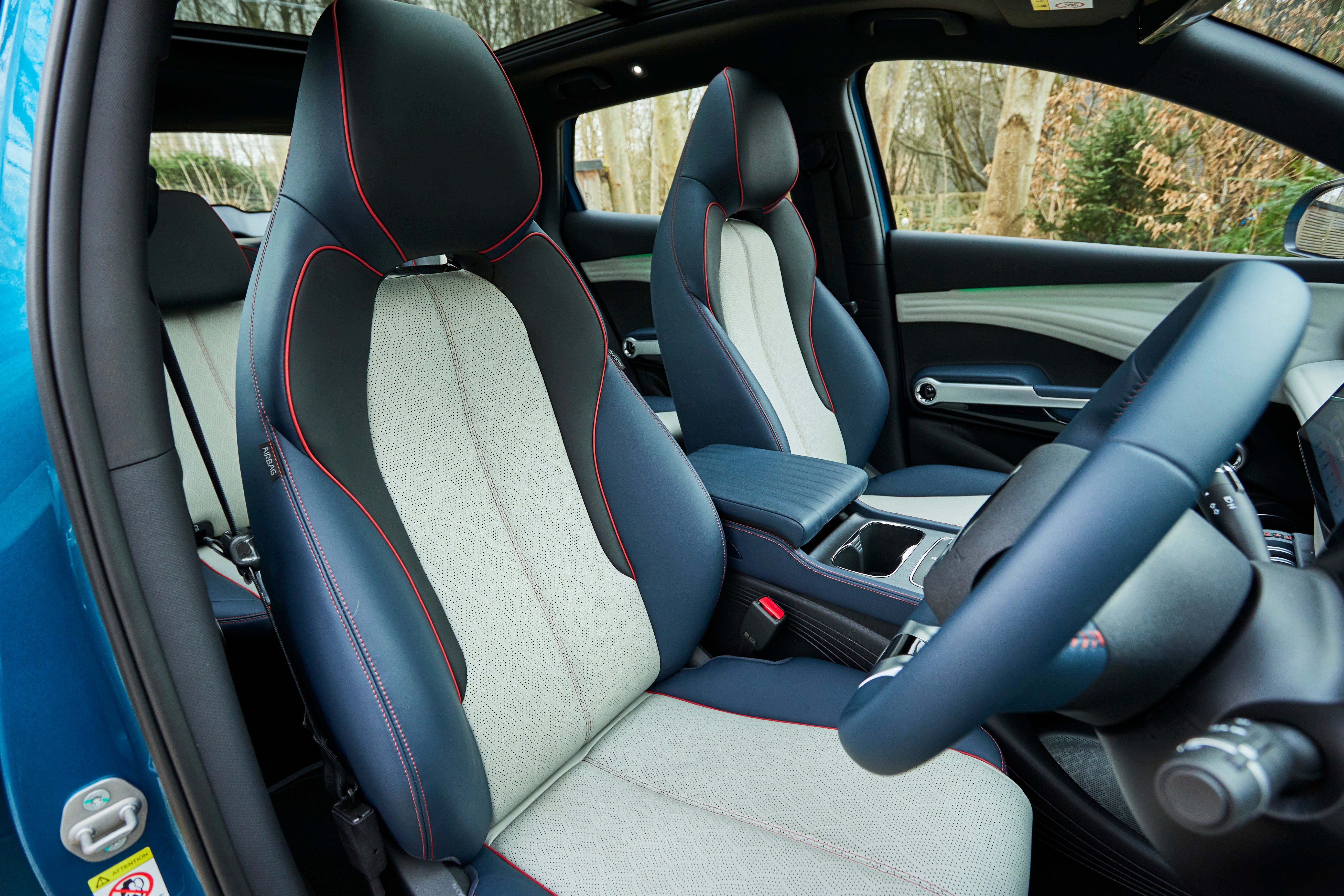
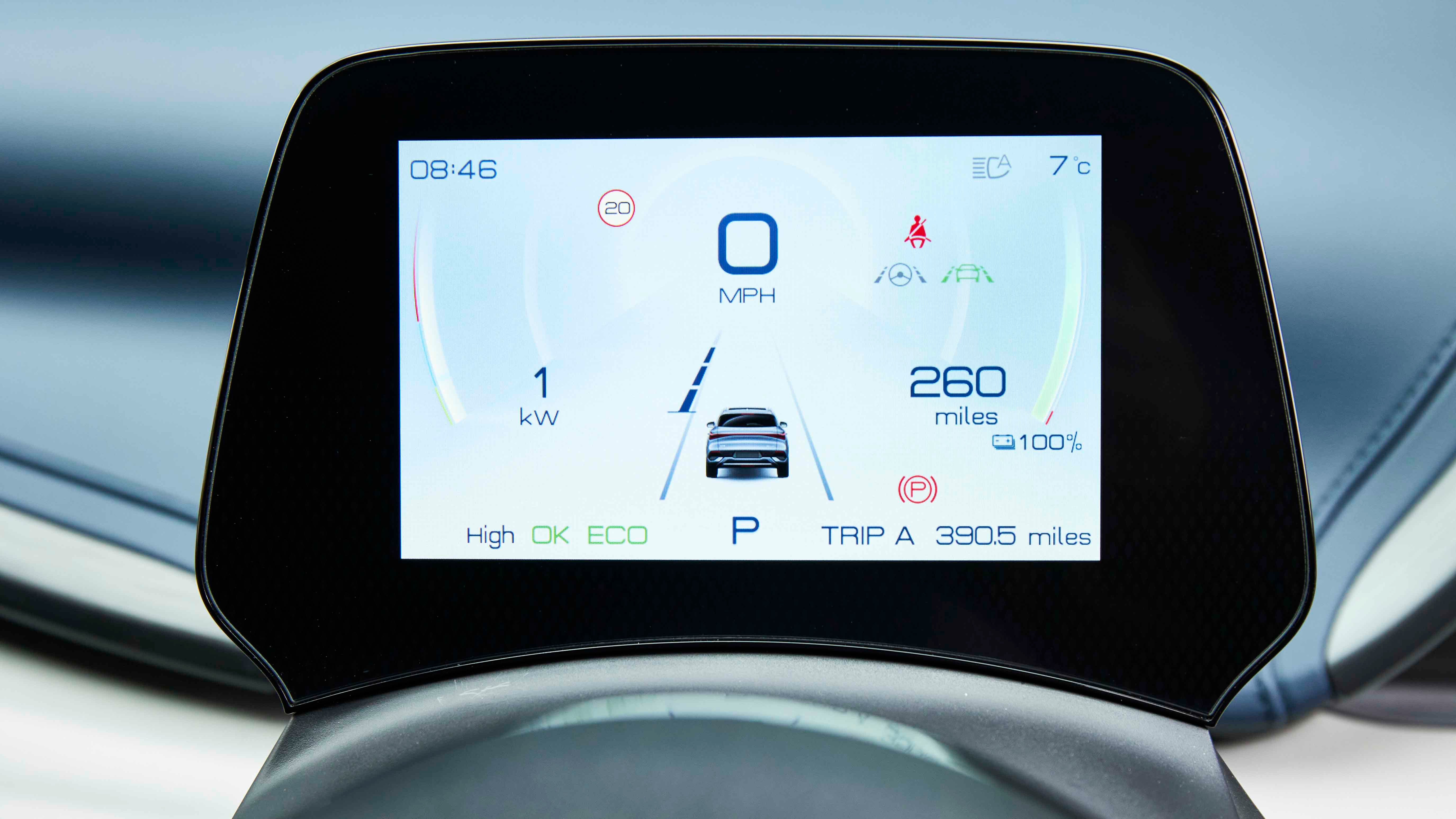
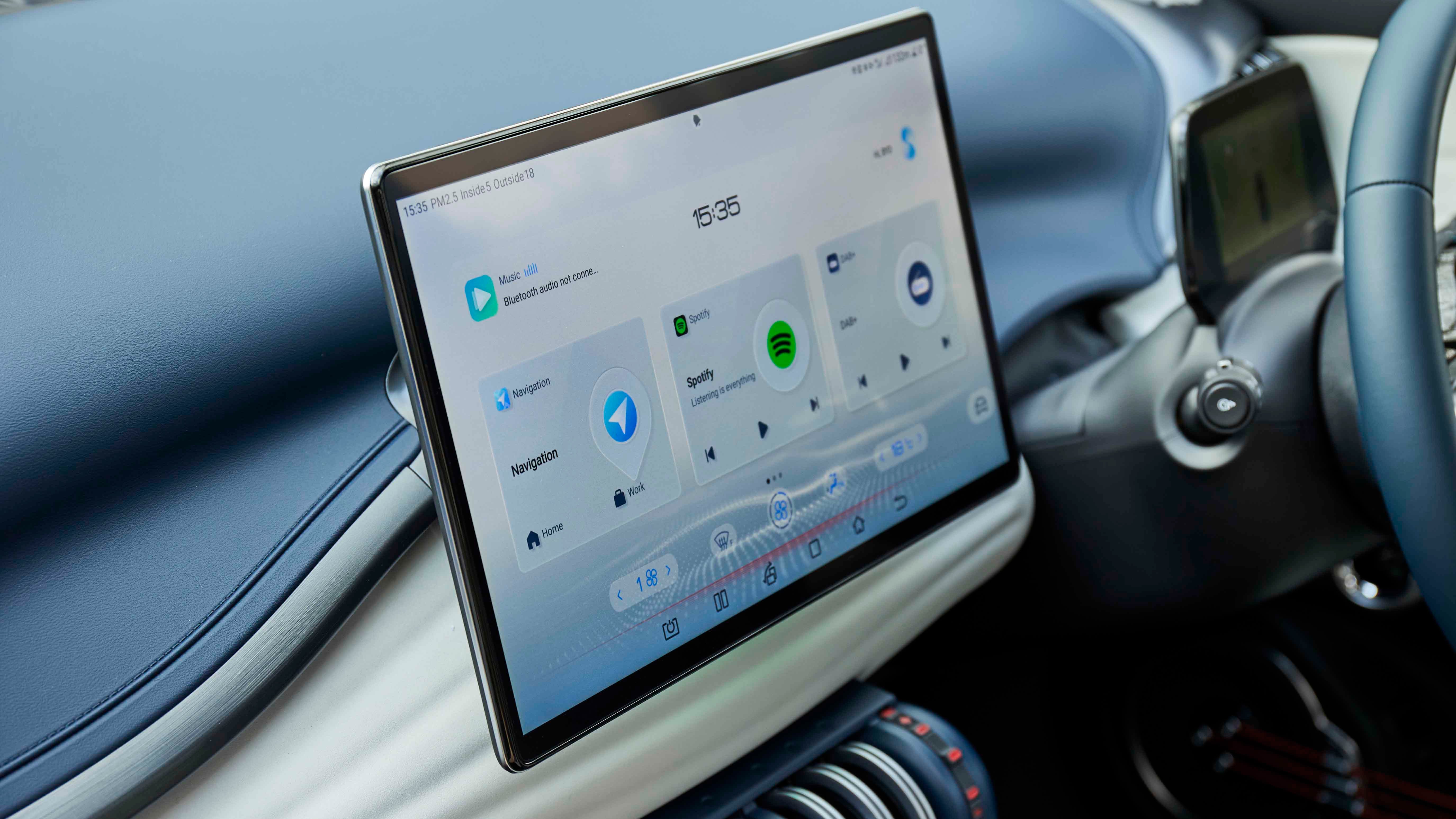
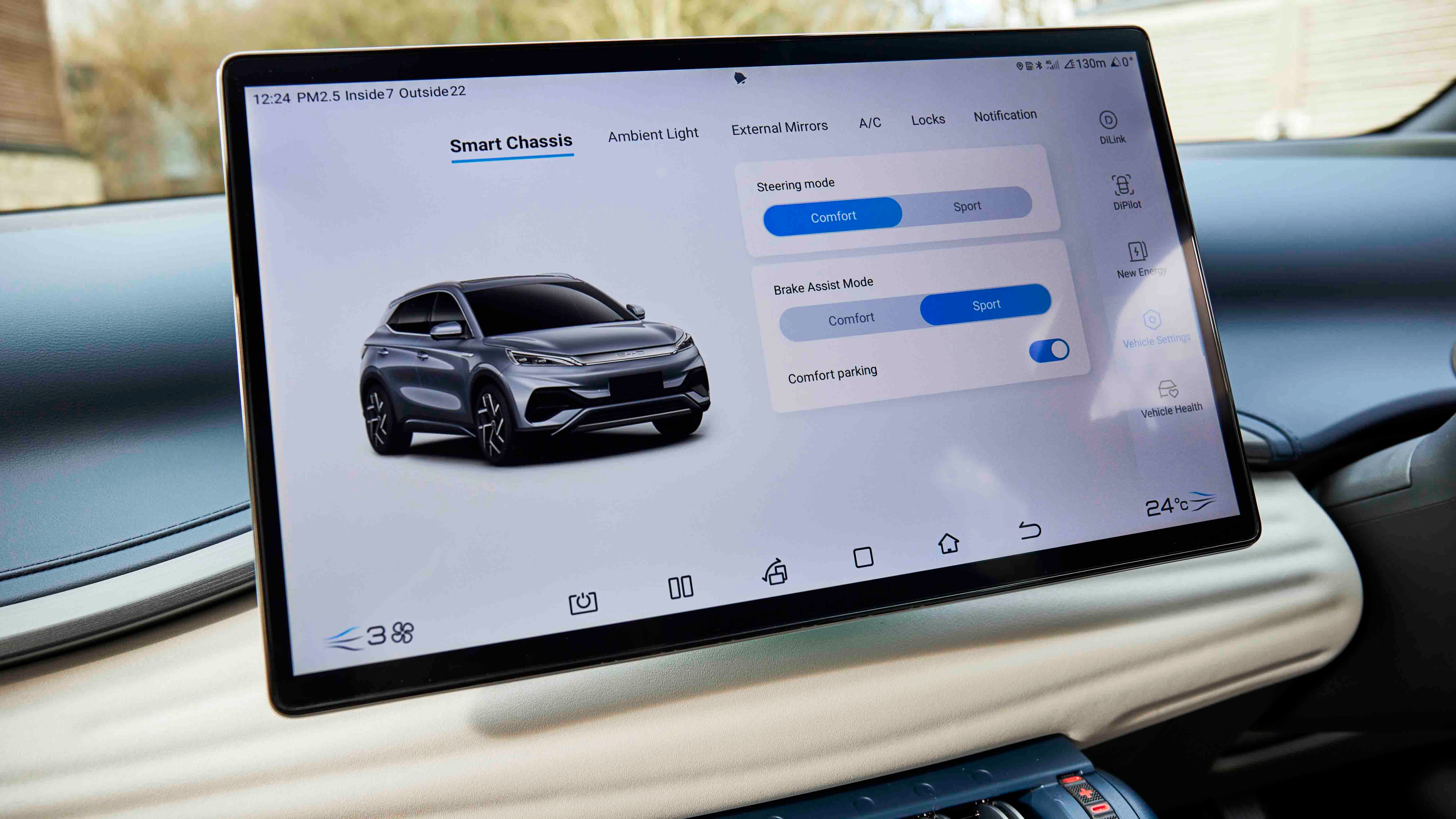
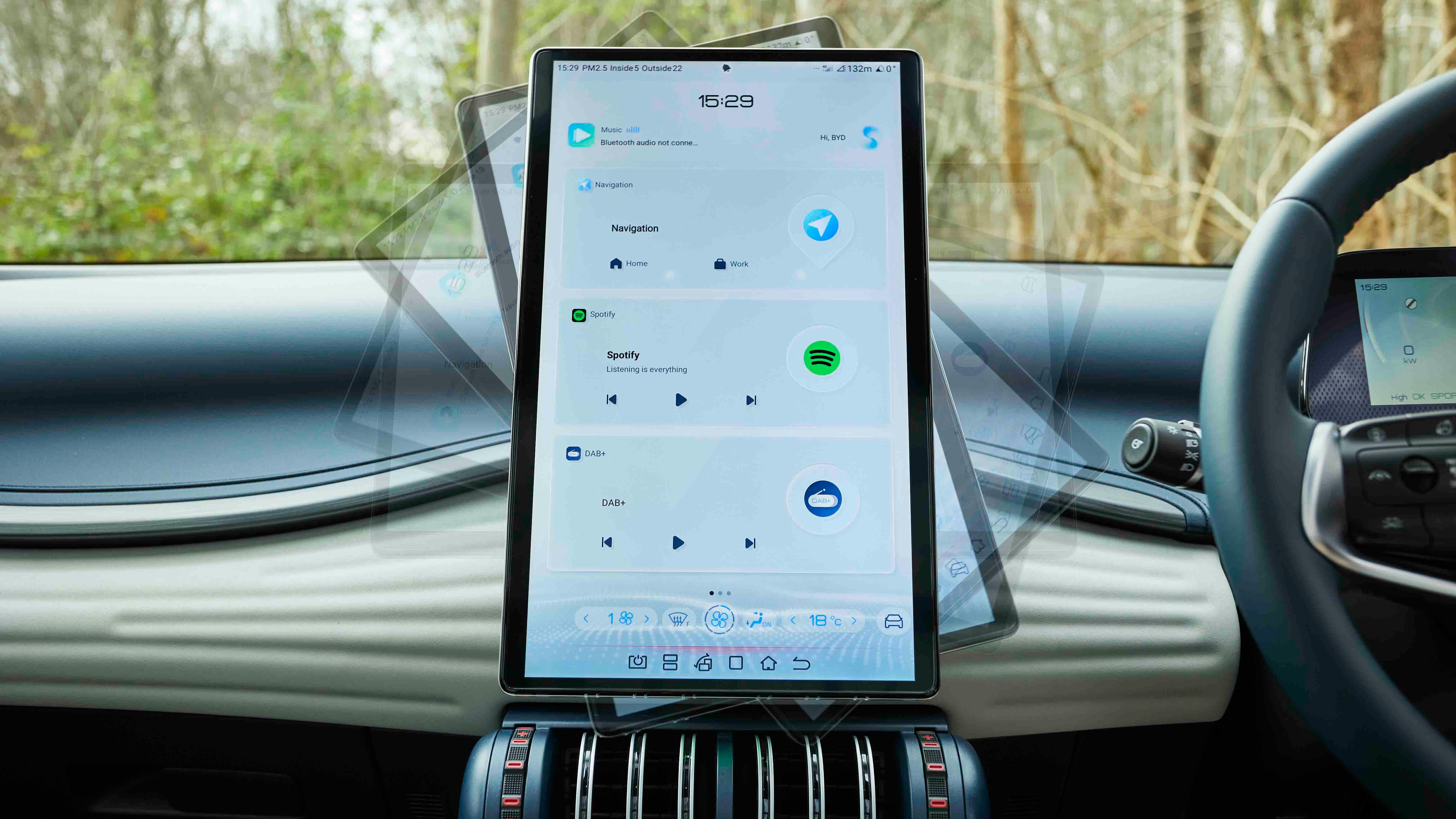
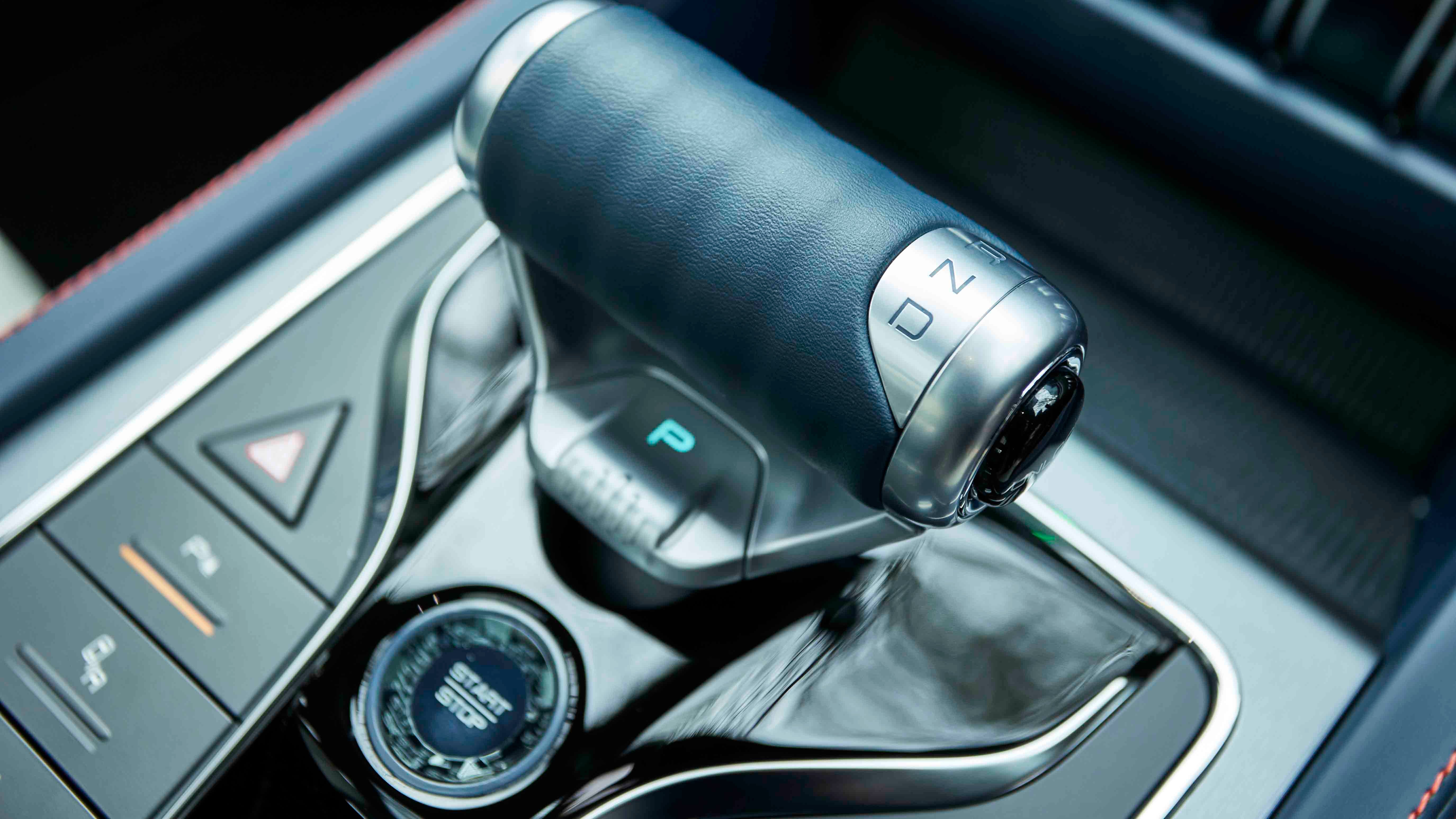
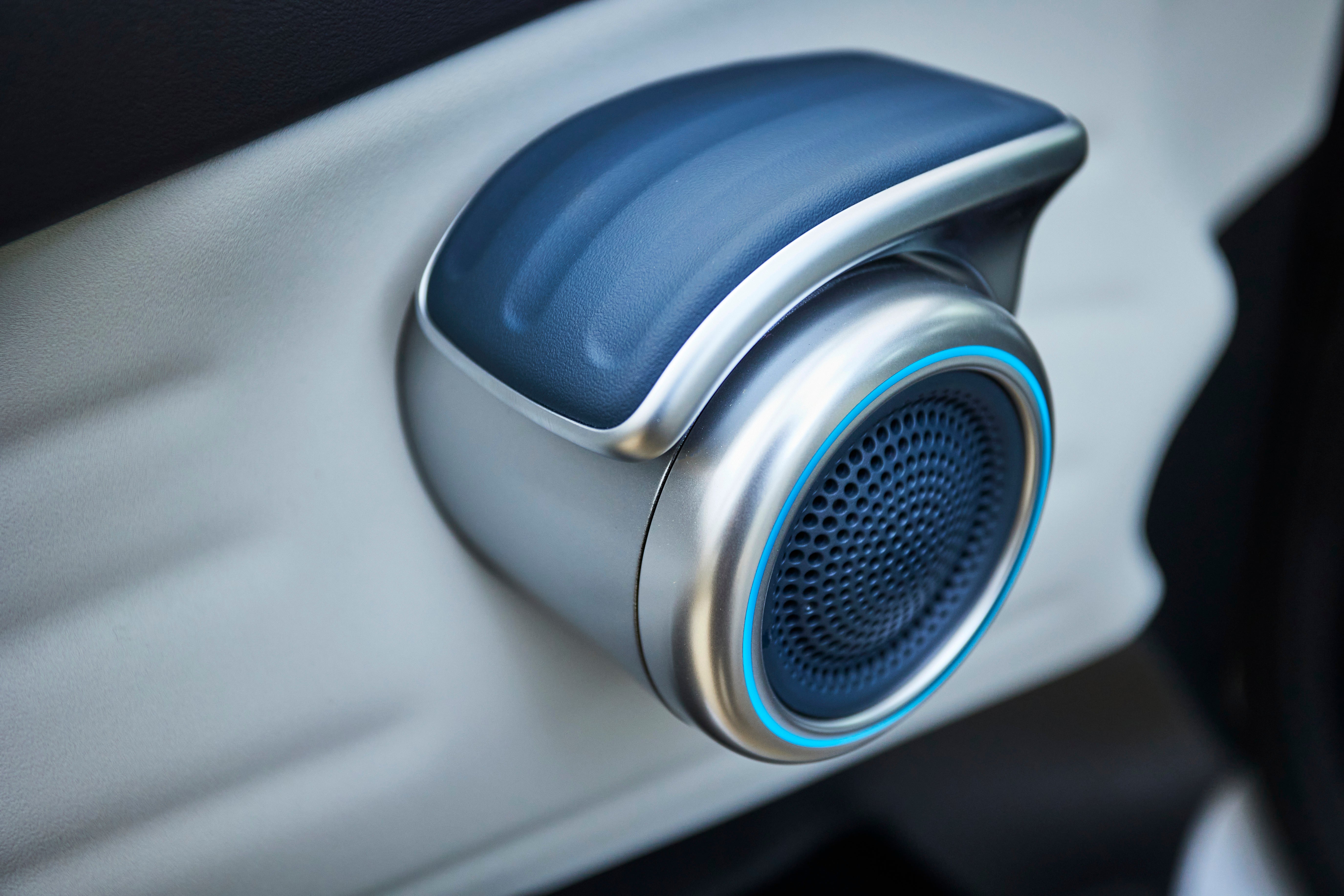
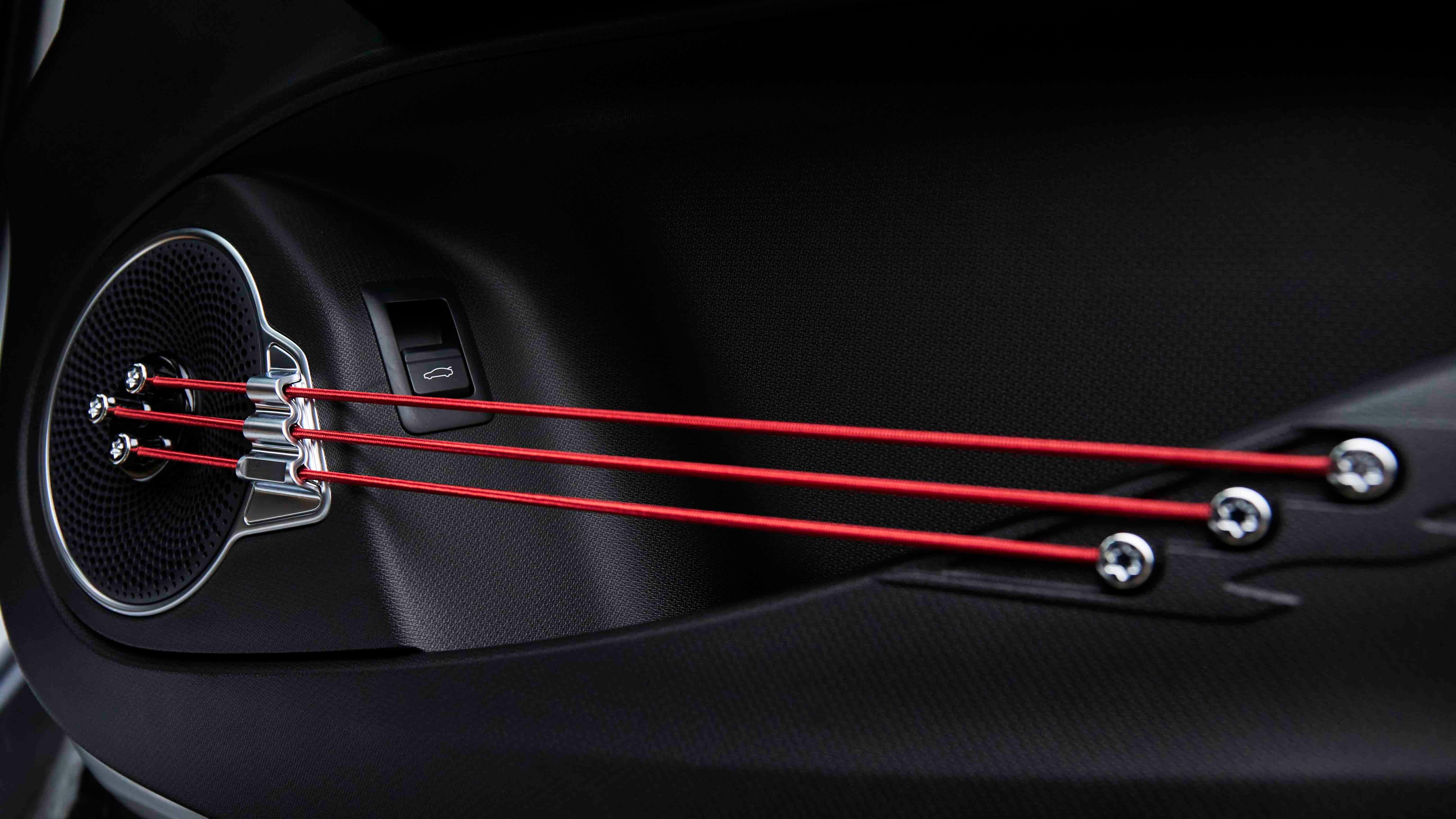
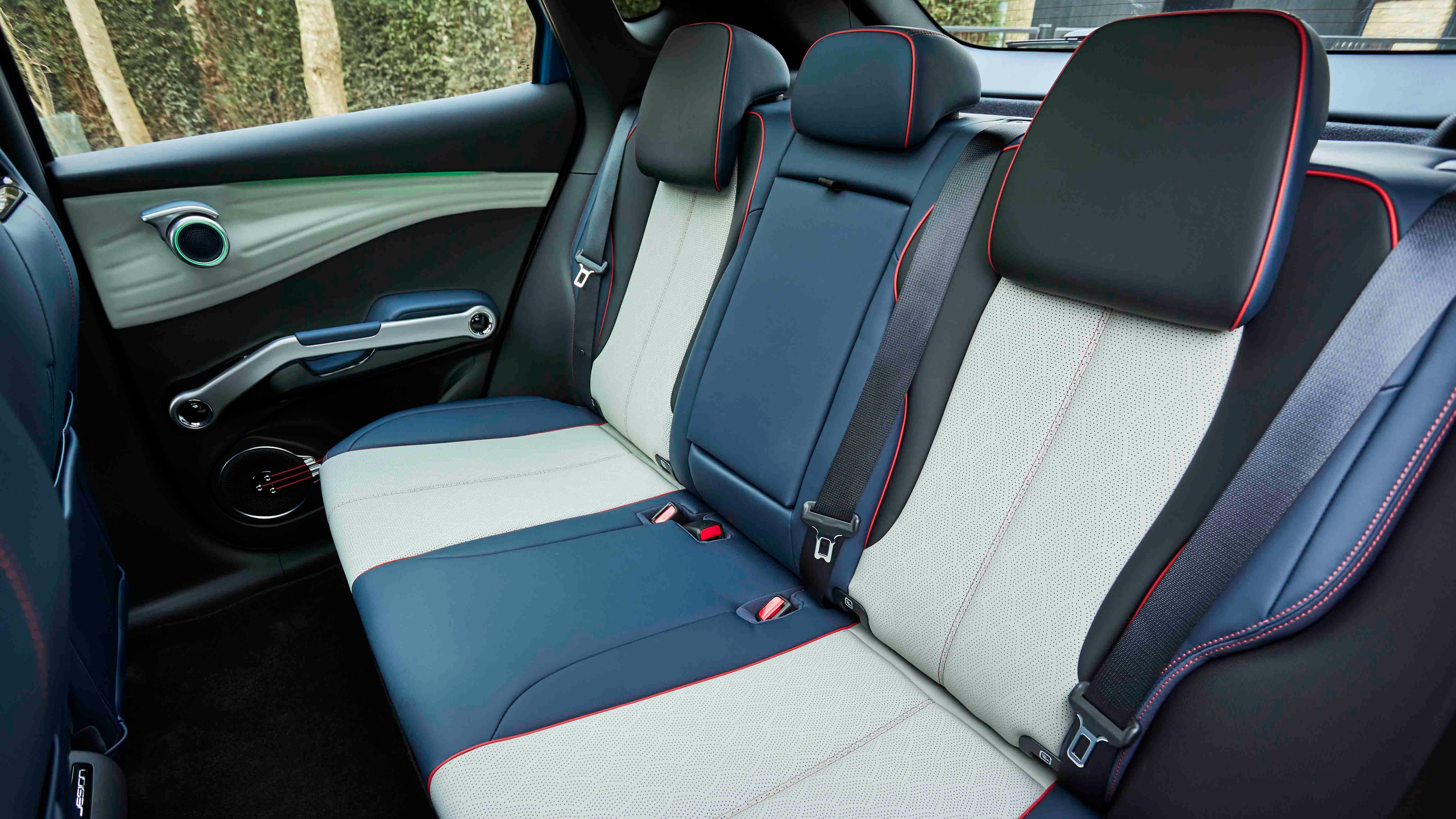
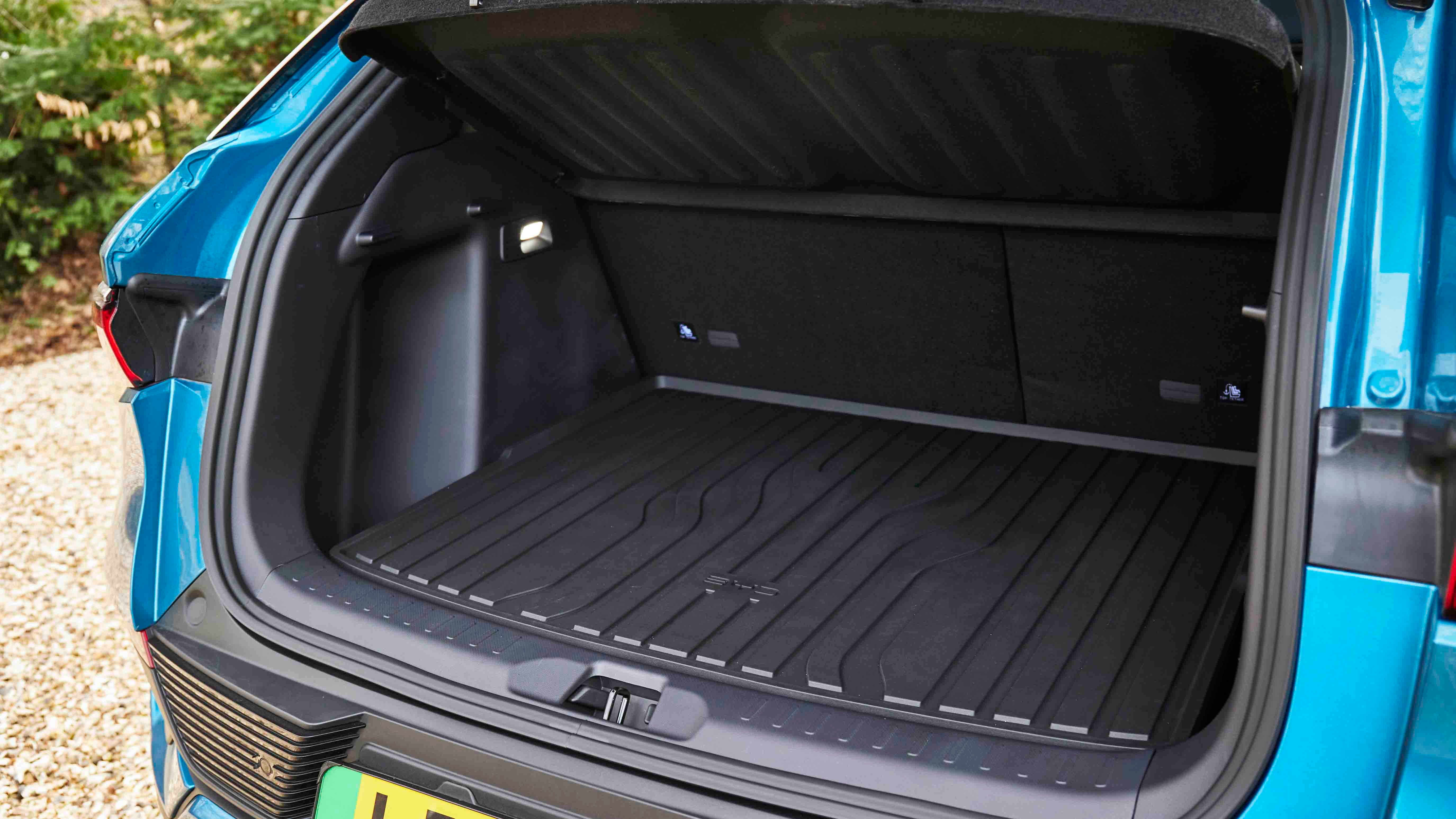
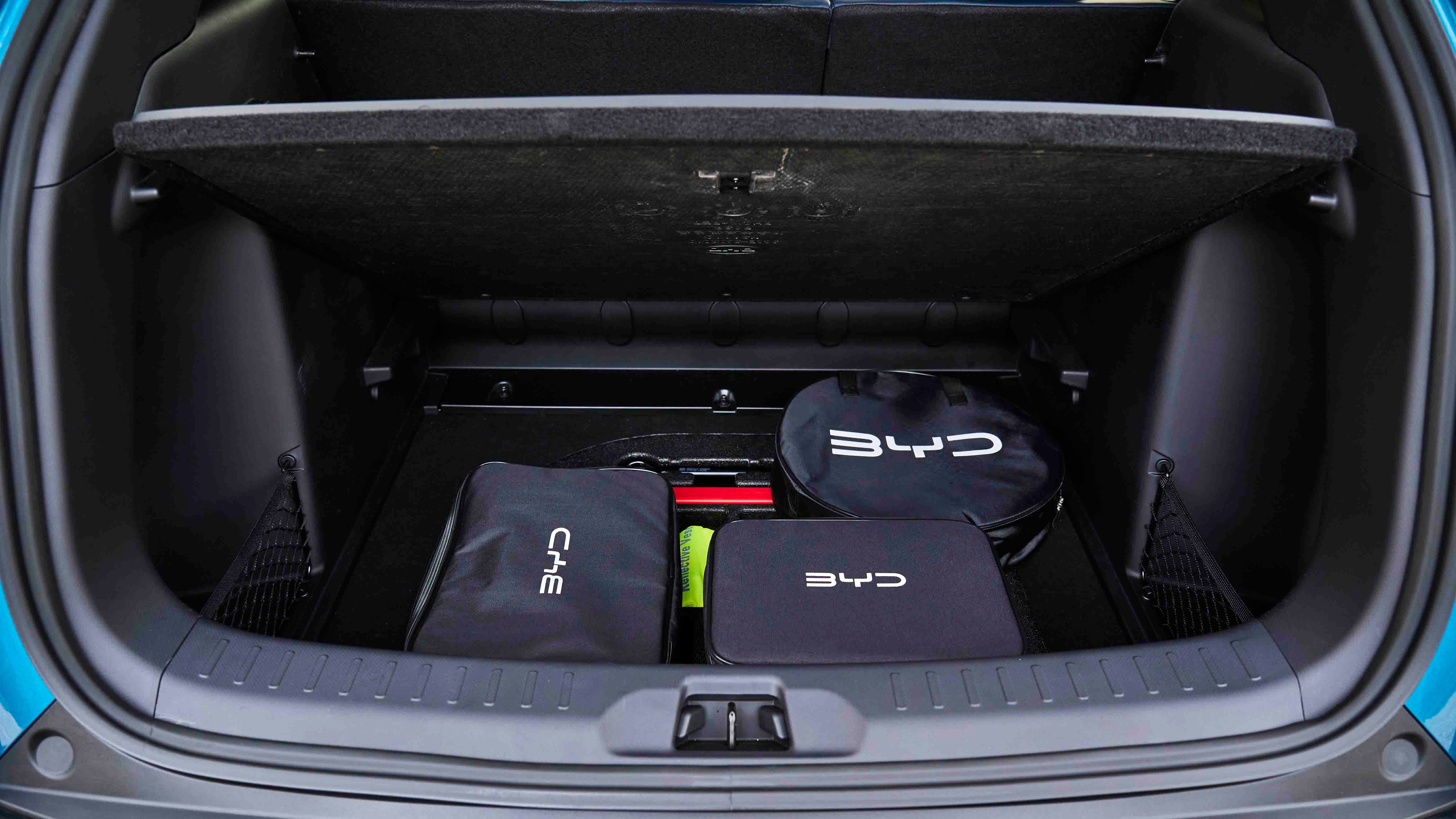
BYD Atto 3 Review

The BYD Atto 3 is an electric SUV that aims to steal your attention away from brands that you’re more familiar with.
And it’s stuffed with interesting touches that make it stand out – although some of these touches risk feeling like gimmicks.
- Interesting, quality interior
- Comfortable
- Five-star safety score
- Some gimmicky features
- Not engaging to drive whatsoever
- Only one battery option
Should I buy a BYD Atto 3?
That’s an interesting question. There are so many electric SUVs on the market already, such as the BMW iX1, Tesla Model Y, Audi Q4, Hyundai Ioniq 5, Nissan Ariya and Volkswagen ID.4, so should you buy a BYD Atto 3?
Perhaps you want something new or different, from a dynamic and upcoming brand? To stand out from the crowd? Well, you’ll certainly have to explain what it is and why the company’s ‘Build Your Dreams’ slogan is plastered across the tailgate, but you don’t have to worry about the stability of the brand.
"We salute anyone who feels brave and chooses the blue and cream interior with red stitching"
BYD is a powerhouse in its native market, having started as a battery manufacturer and then building vehicles. It’s been on UK roads longer than you probably realise – its electric buses could be found on our city streets over a decade ago. Now it has a growing, if confusingly named, range of cars – including the electric Atto 3, Seal and Dolphin, and the plug-in hybrid Seal U.
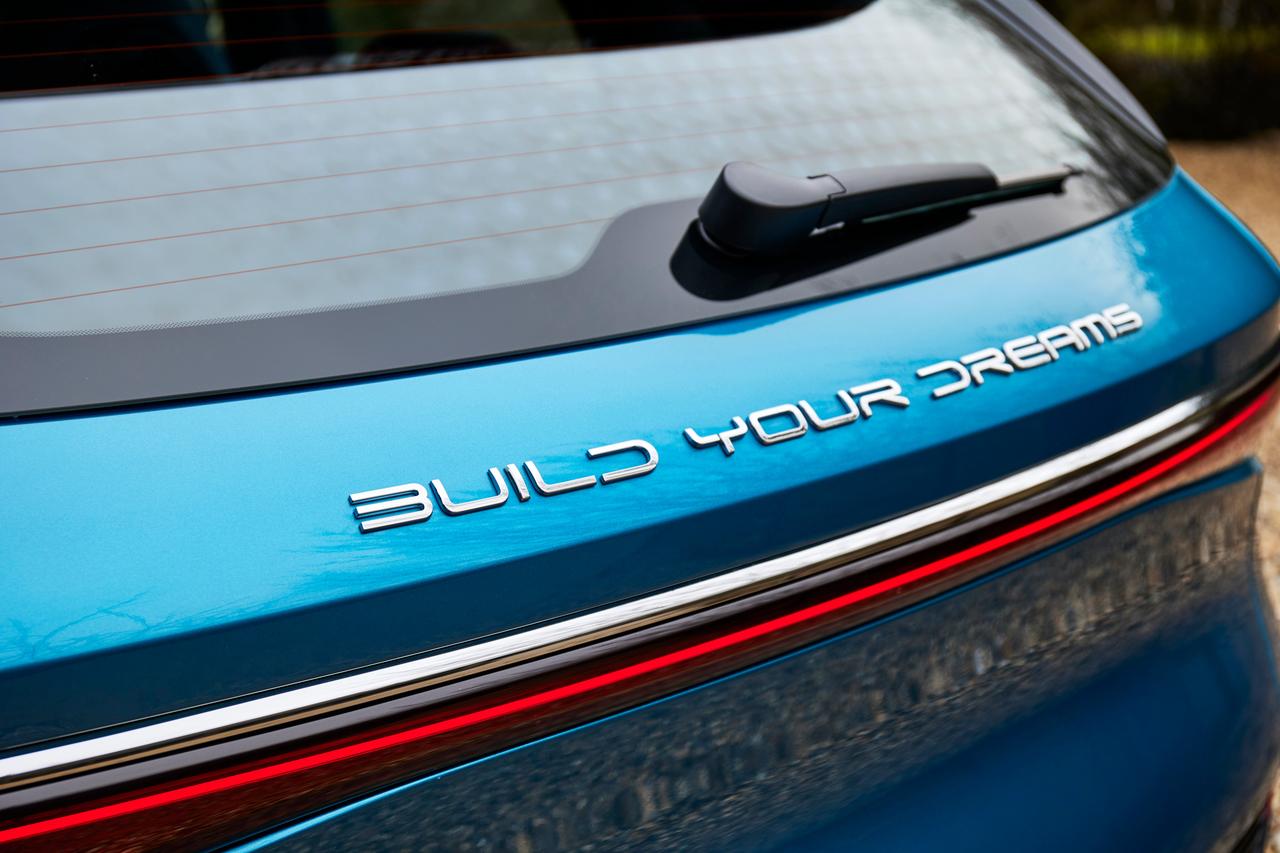
Maybe you’re bored of the grey and black interiors you’ll find in most rivals, in which case the Atto 3’s option of blue, cream and red will definitely appeal. It’s a whole lot livelier than the exterior, that’s for sure.
Or maybe you’re just keen on a good-value product. As a new car, the Atto 3 undercuts the cars mentioned above by at least a couple of grand, and the difference is even more noticeable on the used market. And there’s the balance of a six-year, 93,000-mile warranty to give you peace of mind for years to come.
Interior and technology
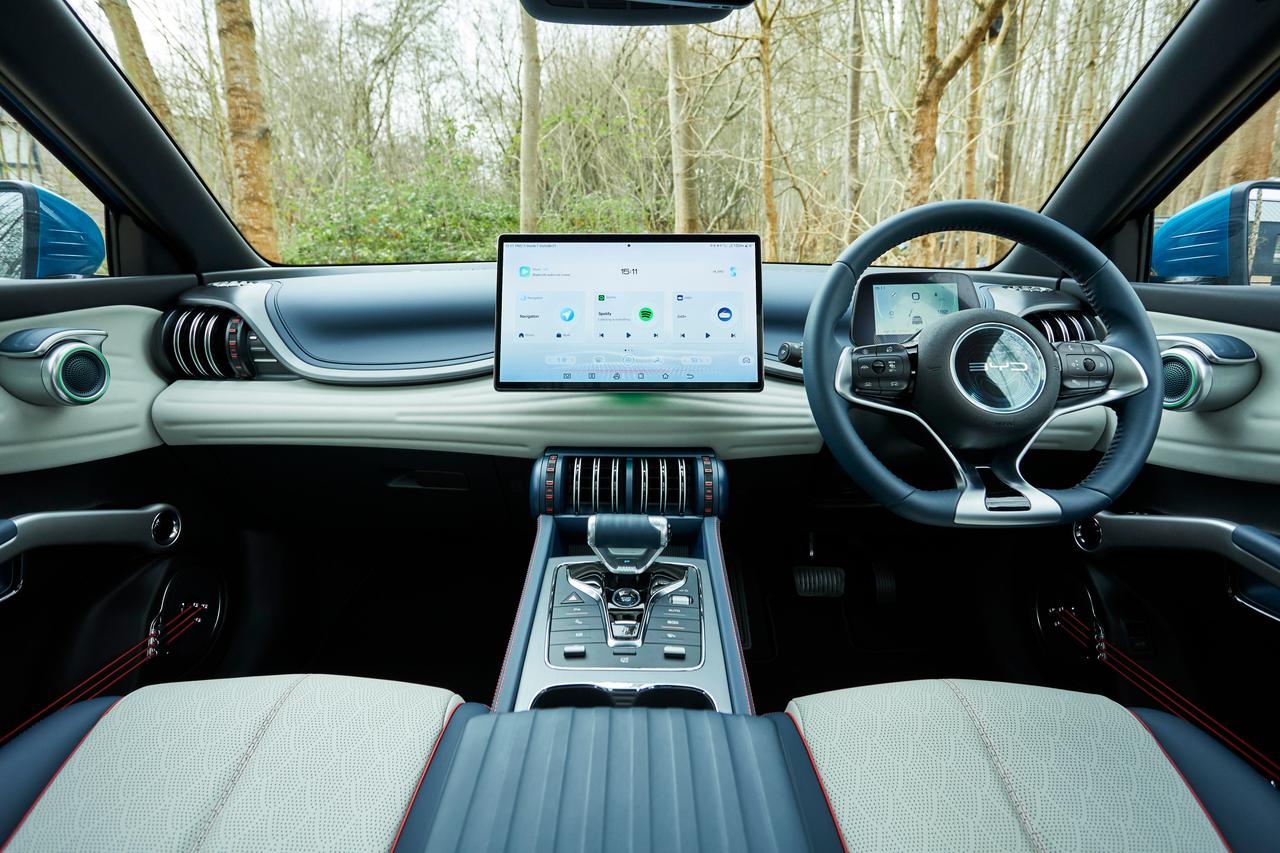
While a fully black interior is available, to suit demure European tastes, we salute anyone who feels brave and chooses the blue and cream interior with red stitching.
Whichever you choose, the Atto 3’s interior is a really interesting place to sit. Just look at the textured dash that’s reminiscent of flowing waves, the ruggedly ridged centre armrest and the chrome-lined vertical air vents. Then there’s the door release handles, mounted on top of speakers, and the guitar string door handles – which, as we found out, can be played like a real guitar.
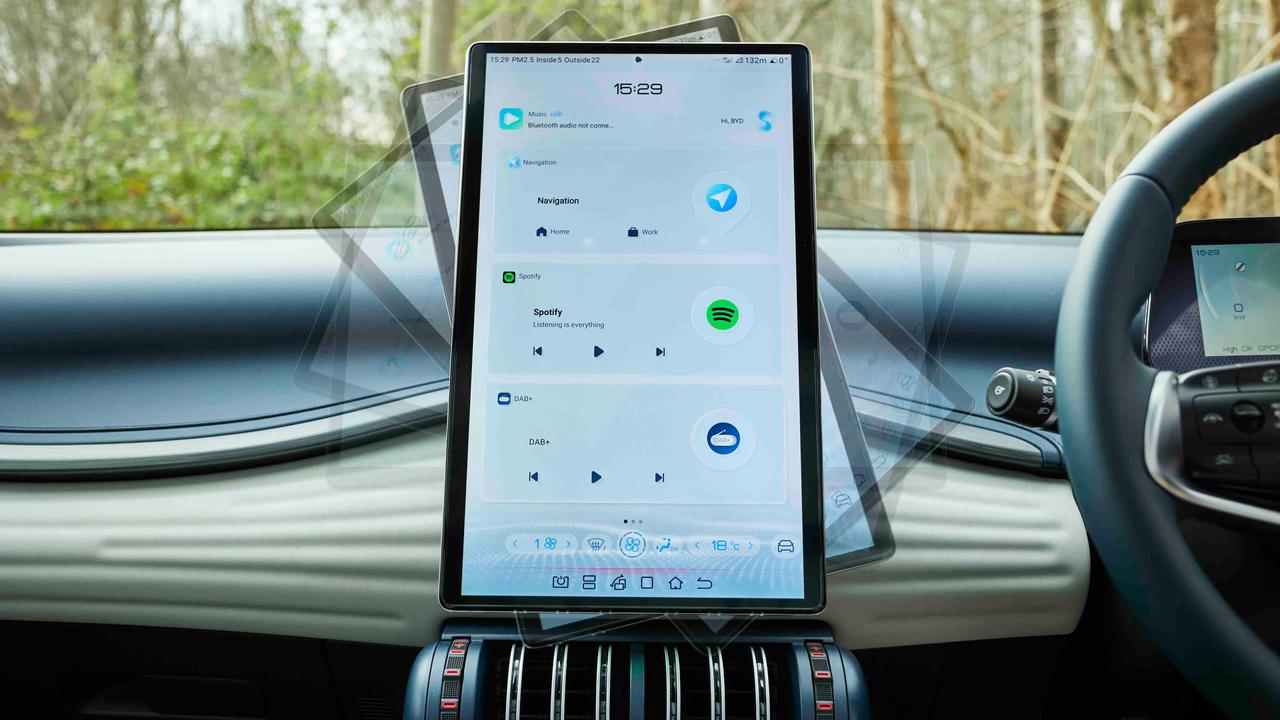
We haven’t even talked about the touchscreen yet. It’s a whopper, at 12.8 inches (15.6 inches on top-spec Design versions), and can rotate from landscape to portrait orientation at the touch of a button. Or several buttons, actually, because there’s one on the screen and one on the steering wheel, which seems unnecessary.
Sure, it gives us something extra to write about, and it’s a fun party trick to show your friends, but how often are you actually going to switch the orientation during ownership? And for what reason? If you prefer the portrait mode, it slightly gets in the way of front visibility, and it resets to landscape mode at the end of every journey. Several team members reported that the screen is pretty much illegible in portrait mode if you’re wearing polarised sunglasses.
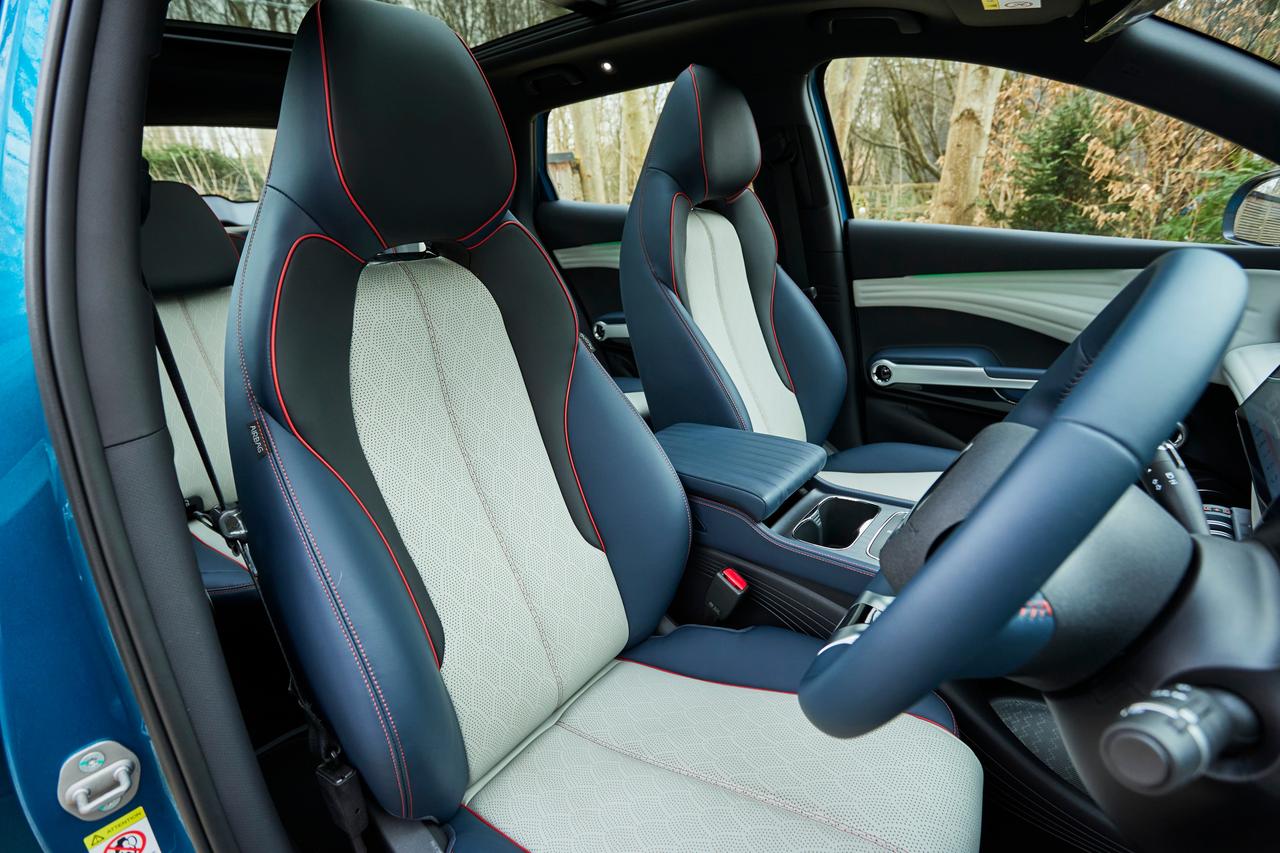
On the plus side, the touchscreen responds instantly to your commands, and the reverse cam is clearer than the water at a Caribbean beach. The main home screen is easy to work out and submenus aren’t too difficult to find – even if we’d like the climate controls to be bigger and more easily adjusted.
It’s clear that you’re meant to use the voice control for many things but, when we tested a fairly early UK model, it recognised our command to change the radio station but wouldn’t comply.
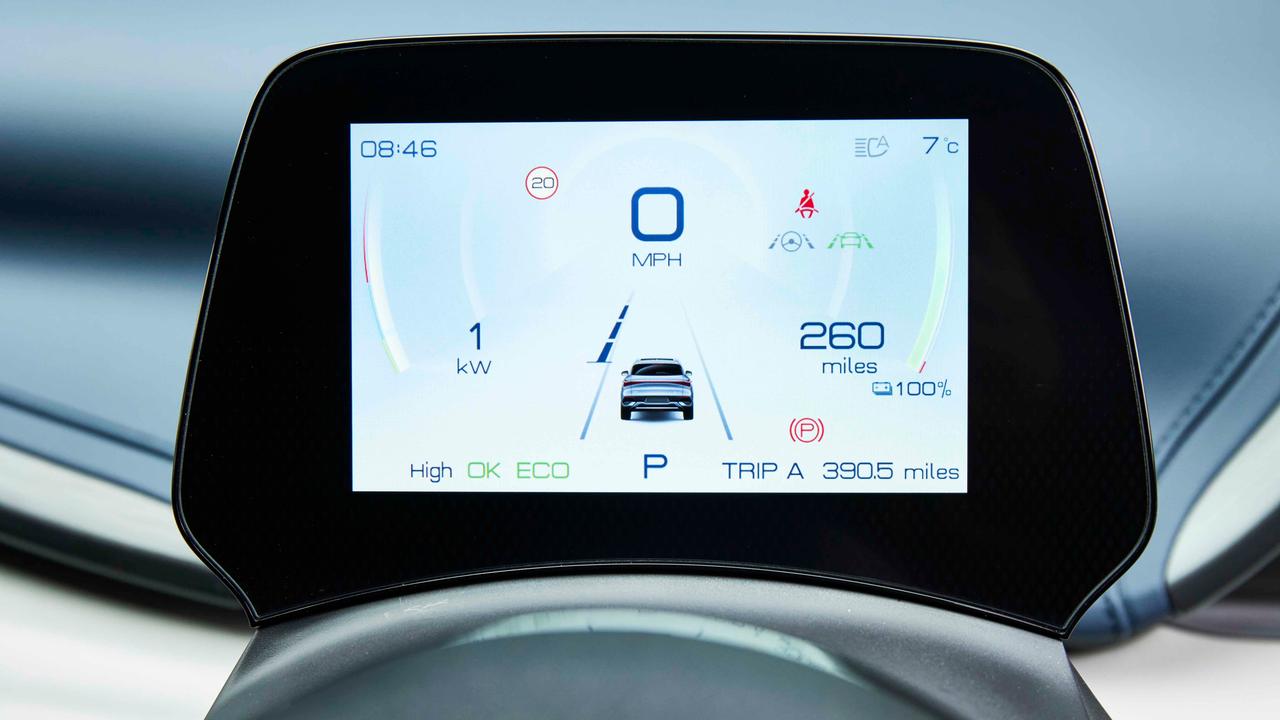
A bit like the Volkswagen ID.4 and Ford Explorer, there’s a small information screen for the driver to look at. This has to display a similar amount of stuff to the Volkswagen screen – the driver assist features, speed, speed limit, range, battery percentage, mileage, drive mode, time, temperature and other warning lights – but the most important information isn’t always immediately obvious when you glance at it.
Build quality is great – more Mercedes than MG. In fact, with all the soft-touch materials and premium trimmings, the BYD’s value for money feels strong. Even with the funky colours and textures, the Atto 3’s interior should stand up well to family life.

Two main trim levels are available, Comfort and Design. Standard equipment is strong – unsurprising for a company whose home market really values in-car tech. Dual-zone climate control, a panoramic sunroof, keyless entry, electric front seats, leather-effect upholstery and ambient lighting are all included on the Comfort trim. Design adds a powered tailgate and the larger touchscreen.
Practicality
Size-wise, the Atto 3 sits between the Volvo EX40 and BMW iX1, and is almost identical in dimensions to the Ford Explorer.
Like the best EVs, the Atto 3 uses a bespoke EV platform (BYD’s e-Platform 3.0, if you’re interested). That allows the battery to be packaged out of the way, maximising interior space. Rear legroom is another attribute that Chinese buyers look for, so there’s plenty of room back there, even for six-foot-plus adults. Headroom is decent, too, and the standard-fit pano sunroof doesn’t cut into the available space too much. The seat bases are a little low, however, so underthigh support isn’t quite perfect.
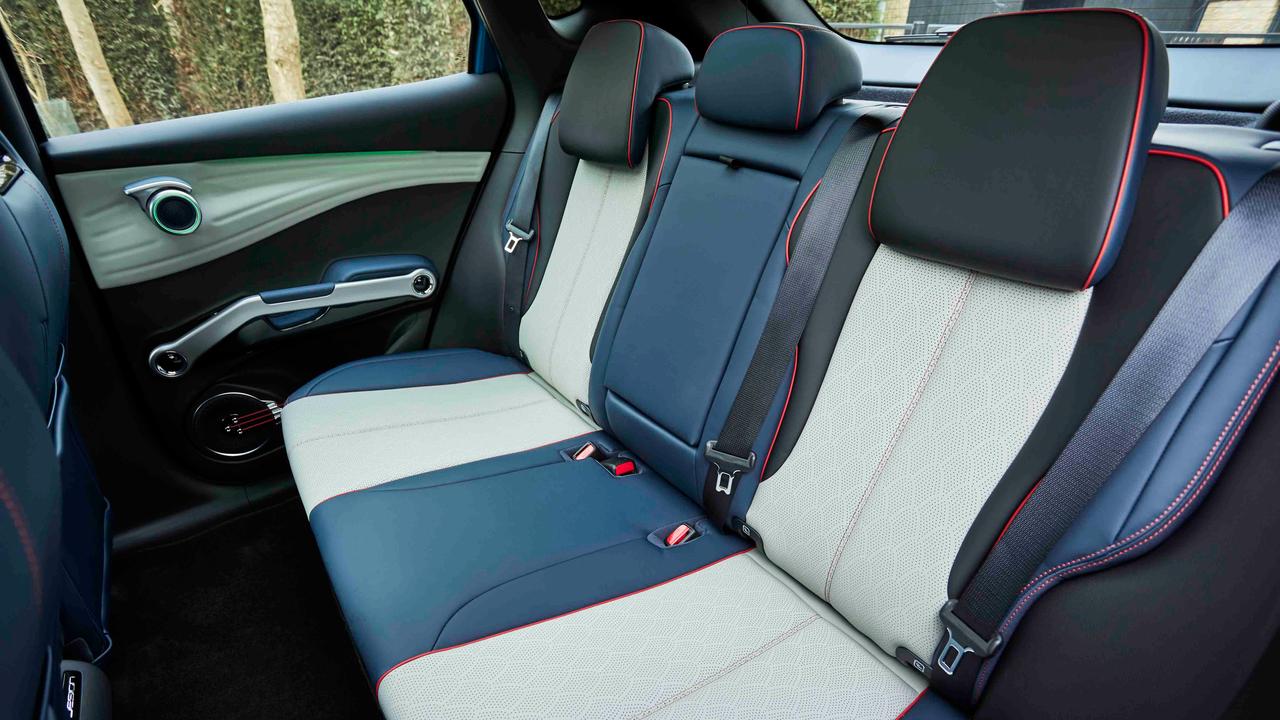
A flat floor means it’s not too difficult to fit three adults side by side. If you’re carrying three children instead, there are two sets of Isofix points on the rear seats and a third set on the front passenger seat. Crucially, the BYD’s shape and wide-opening doors make it easy to install a child seat.
Rear-seat passengers get seatback pockets – including stitched-in phone pockets – plus a fold-down centre armrest with cupholders and door pockets. The back door pockets get the same guitar strings as the front ones… which could get annoying if your kids find them and fiddle with them.

Open the bootlid and you’re met with a 440-litre boot. That’s more than the Nissan Ariya offers, but a little less than the Kia EV3, Skoda Elroq and BMW iX1. It should be plenty for most people’s clutter. You can choose to have a higher boot floor with no load lip – making it easier to load heavy items – or a lower boot floor for extra carrying capacity. As there’s no frunk or anywhere dedicated to cable storage, we’d be tempted to stash the cables under the false floor until we needed the extra space.
Range and performance
There’s not a lot of choice when speccing your Atto 3 – just two trim levels, four paint colours, two interior colours, no optional extras and one powertrain. Every Atto 3 gets a BYD-developed 60kWh battery and a 204hp electric motor, which almost exactly matches the setup in the regular ID.4 or Renault Megane E-Tech.
The stats are pretty competitive, with 260 miles of range quoted and a 7.3-second 0-62mph time. Enough to make it feel quick in daily driving, without ever feeling so fast that it rearranges your internal organs. But, given the rapid pace of EV development and the lingering range anxiety for some buyers, it seems a bit of a missed opportunity not to offer a long range version with over 300 miles.
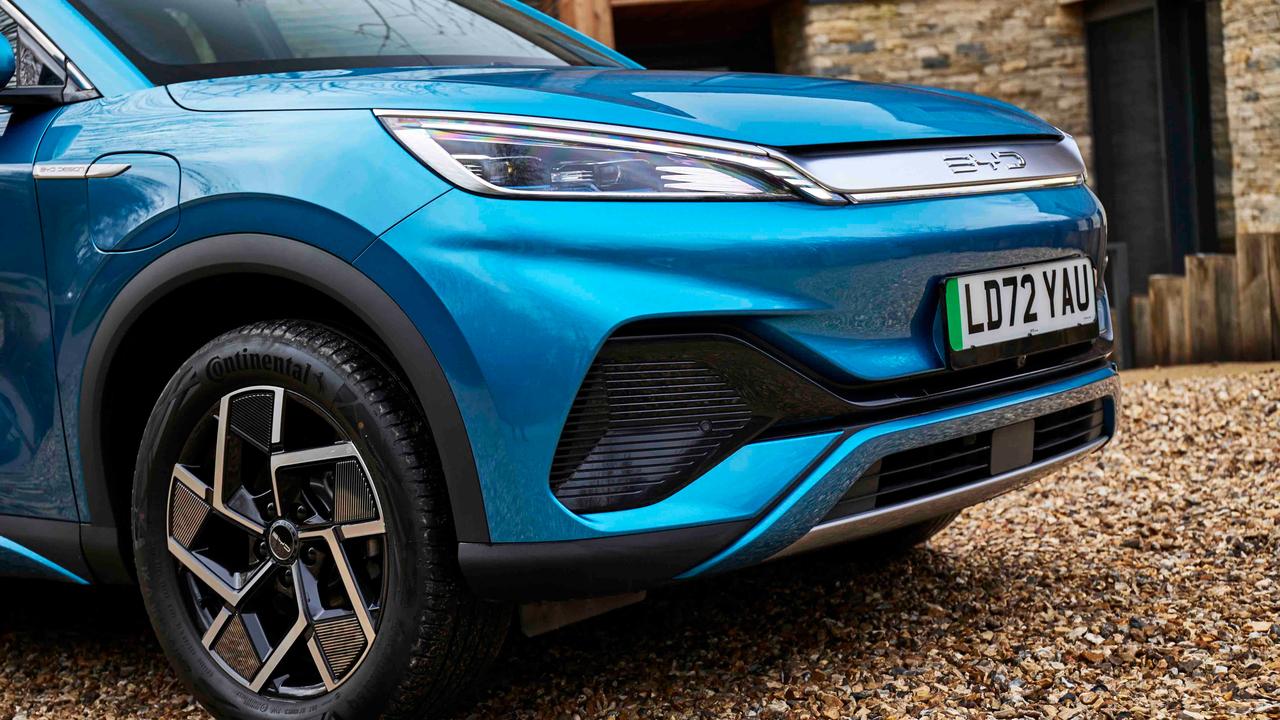
However, a heat pump comes as standard, which should improve cold-weather efficiency so that you can get close to BYD’s figure all year round. It’s an expensive option on some EV rivals.
What’s not so good is the Atto 3’s fast-charging speed – at 88kW it’s a lot lower than the VW Group EVs and, in particular, Hyundai and Kia EVs. It’s not awful but it does mean you’ll be spending longer at a public fast charger; recharging from 10-80% takes around 45 minutes.
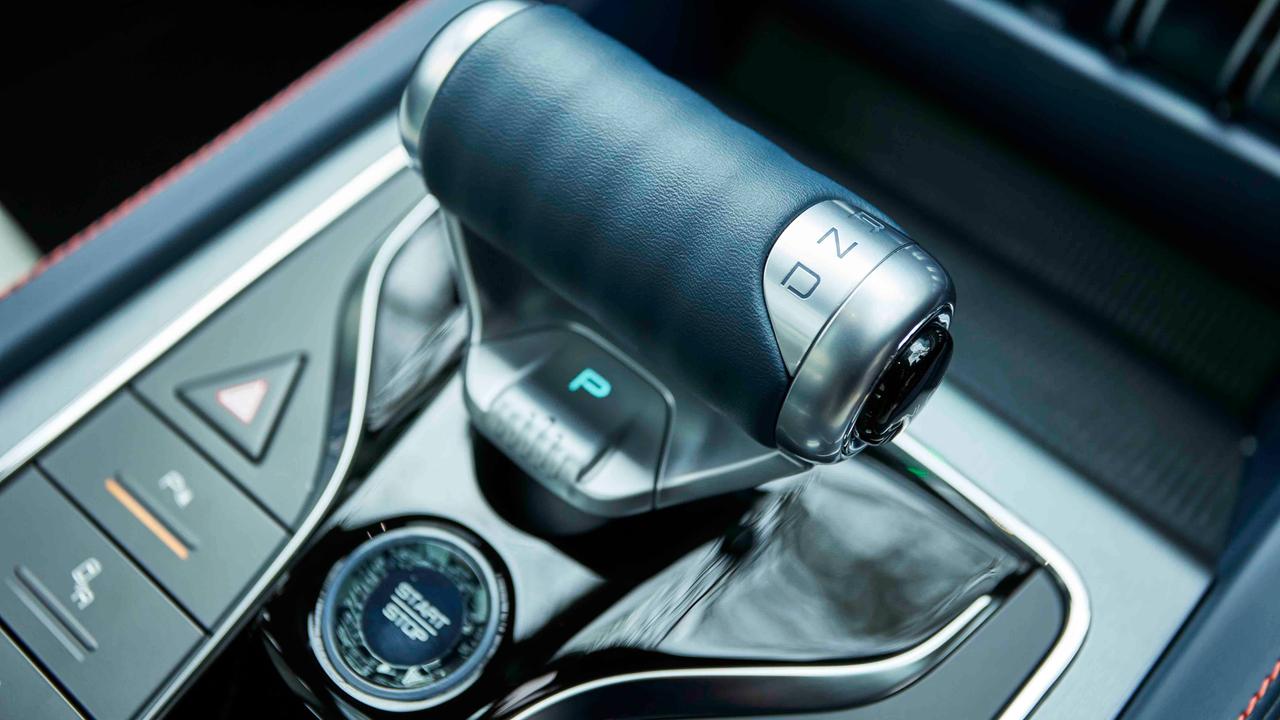
Another of the Atto 3’s party pieces is that Vehicle-to-Load (V2L) charging comes as standard, meaning you can power other electricals from the car’s high-voltage battery.
A 7kW home wallbox takes 10 hours to fully charge the battery – but you’re unlikely to let it run to empty, so it won’t need quite so long to get back to a full charge.
Driving and comfort
The driving experience is best described as competent. That sounds like faint praise – really it’s saying that the Atto 3 is a tool to get to your destination. It won’t entertain you and you won’t feel engaged in the process – you’ll get the best from it when you take it easy. That’s fine for an electric SUV which is hardly going to be driven down a back road in anger.
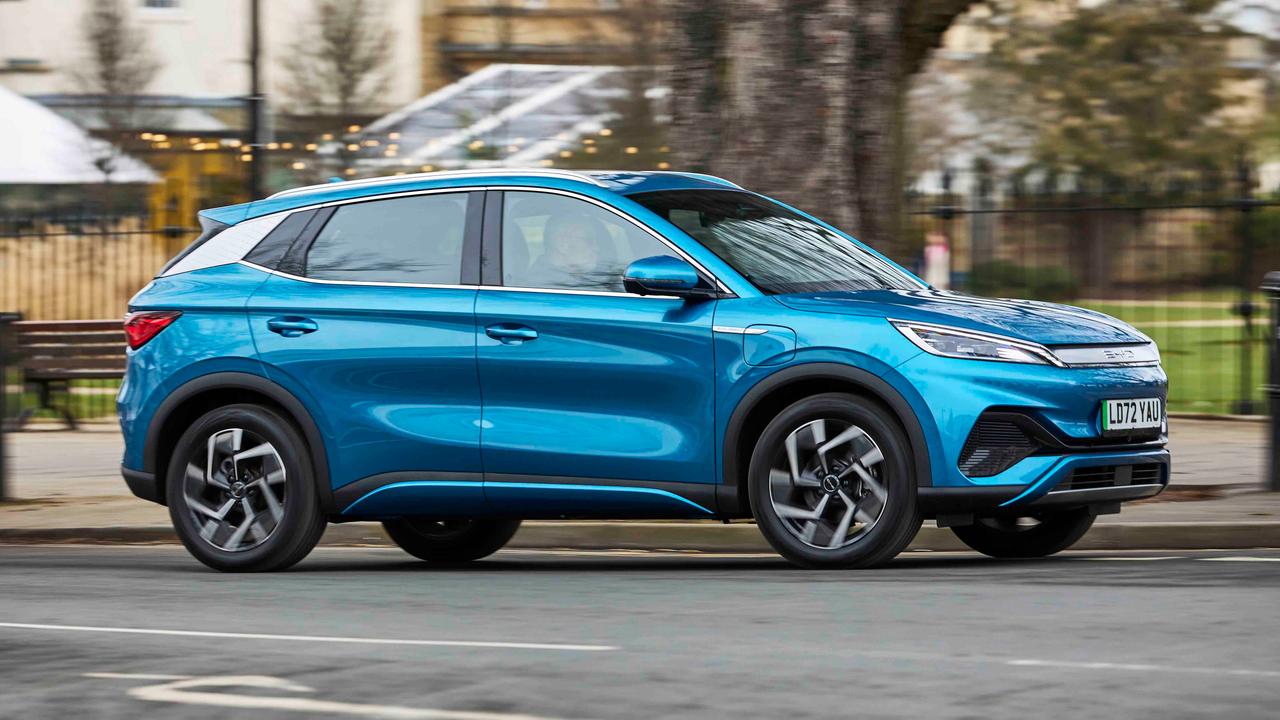
If you do decide to take it by the scruff of the neck, all you’ll get is body roll through corners and pitch if you brake or accelerate hard.
We’d also like a stronger setting for the regenerative braking. There are two to choose from, but no setting that lets you drive the Atto 3 predominantly on one pedal. Having such a setting would likely improve efficiency, too.

On the plus side, the Atto 3’s relaxed demeanour means it’s pretty comfortable – a more important attribute given the varied state of the UK’s roads. You’ll be aware of big bumps, but the harshness is shaved off like a barman taking the head off a pint of Guinness.
High-speed refinement is also good, with only a little bit of wind noise disrupting the ambiance. Nothing turning up the radio can’t fix, and it’s only exacerbated because there’s no engine in the background.
Sitting on modestly sized 18-inch alloy wheels, the Atto 3 avoids the jittery low-speed ride that plagues some EVs. So it’s comfortable around town as well as on the motorway.

































